Everything You Need to Know About Marathon Training for Beginners
 Everything You Need to Know About Marathon Training for Beginners
Everything You Need to Know About Marathon Training for Beginners
Anyone can run a marathon—you just have to know how to train for one.
So you want to run a marathon, huh? You probably didn't make the decision to run 26.2 miles lightly; considering that the average finishing time is 4:39:09, running a marathon is a serious undertaking for which you need to physically and mentally prep.
Don't let that scare you, though! Anyone can run a marathon; the majority of it is mental, and if you believe you can run 26.2 miles, you will. But you do still need a solid plan since much of marathon training comes down to being as prepared as possible. Here, everything you need to know to make it to (and through) race day.
Are You Ready to Run a Marathon?
Going from zero to 26.2 is possible but probably not a great idea. If you've never really run before, or tend to max out at three miles, that's OK—but you need to do a little more than just downloading a training plan from the internet.
First, you should know where you stand injury-wise, says Melanie Kann, a running coach for New York Road Runners.
"If there are any nagging aches and pains heading into the plan, adding more mileage isn't going to help the situation," says Kann. "Definitely get checked out by a sports doc if necessary, or work with a PT to make sure your support team and overall strength and mobility regimen is in place."

ط¬ط§ظ† ظˆظˆط¯ ع©ظ‡ ط¨ط±ظ†ط§ظ…ظ‡ ظ…ط§ط±ط§طھظ† طھظ…ط±غŒظ†غŒ New York’s Mile High Run Club ط±ط§ ط±ظ‡ط¨ط±غŒ ظ…غŒâ€Œع©ظ†ط¯ ظ…غŒâ€Œع¯ظˆغŒط¯: ططھغŒ ط§ع¯ط± ظ‡ظ…ظ‡ ع†غŒط² ط¯ط±ط³طھ ظˆ ظ…ط±طھط¨ ط¨ط§ط´ط¯طŒ ط¨ط§غŒط¯ ظ‚ط¨ظ„ ط§ط² ط´ط±ظˆط¹ ط¨ط±ظ†ط§ظ…ظ‡ طھظ…ط±غŒظ†غŒ ظ…ط¨طھط¯غŒ ظ…ط§ط±ط§طھظ†طŒ ط³ط·ط ط¢ظ…ط§ط¯ع¯غŒ ط¬ط³ظ…ط§ظ†غŒ ظ¾ط§غŒظ‡ ط±ط§ ط¯ط§ط´طھظ‡ ط¨ط§ط´غŒط¯.
ط¨ظ‡ ط§غŒظ† ظ…ط¹ظ†ط§ ع©ظ‡ ط´ظ…ط§ طط¯ط§ظ‚ظ„ 24 طھط§ 32 ع©غŒظ„ظˆظ…طھط± ط¯ط± ظ…ط§ظ‡ ظˆ ظ‡ظپطھظ‡â€Œط§غŒ ط³ظ‡ طھط§ ع†ظ‡ط§ط± ط±ظˆط² ط¨ظ‡ ظ‡ظ…ط±ط§ظ‡ طھظ…ط±غŒظ†ط§طھ ظ‚ط¯ط±طھغŒطŒ cross-training ظˆ ط±غŒع©ط§ظˆط±غŒ ع©ط±ط¯ظ† ط¨ط¯ظˆغŒط¯. ظ‡ظ…ع†ظ†غŒظ†طŒ ط¨ظ‡ ط¨ط±ظ†ط§ظ…ظ‡ طھظ…ط±غŒظ†غŒ ظ…ط§ط±ط§طھظ† ع©ظ‡ طھطµظ…غŒظ… ط¨ظ‡ ط§ط³طھظپط§ط¯ظ‡ ط§ط² ط¢ظ† ط¯ط§ط±غŒط¯طŒ ظ†ع¯ط§ظ‡غŒ ط¨غŒظ†ط¯ط§ط²غŒط¯.
ظ…غŒط²ط§ظ† ظ…ط³ط§ظپطھ ط§ظˆظ„غŒظ† ط¯ظˆ ط·ظˆظ„ط§ظ†غŒ ط´ظ…ط§ ع†ظ‚ط¯ط± ط§ط³طھطں
ظ‡ظ†ظˆظˆط¯ ظ…غŒâ€Œع¯ظˆغŒط¯: آ«ط§ع¯ط± ط§ظˆظ„غŒظ† ط¯ظˆغŒط¯ظ† ط·ظˆظ„ط§ظ†غŒ ط´ظ…ط§ 10 ع©غŒظ„ظˆظ…طھط± ط§ط³طھطŒ ط¨ط§غŒط¯ ط¨طھظˆط§ظ†غŒط¯ ط¢ظ† ط±ط§ ط¨ط¯ظˆظ† ط¯ط±ط¯ط³ط± ط²غŒط§ط¯ ط§ظ†ط¬ط§ظ… ط¯ظ‡غŒط¯.آ»

ط§ظˆ ط§ط¶ط§ظپظ‡ ظ…غŒâ€Œع©ظ†ط¯ ع©ظ‡ غŒع© ظ‚ط§ظ†ظˆظ† ع©ظ„غŒ ط¯ط± ظ…ظˆط±ط¯ ط¨ط±ظ†ط§ظ…ظ‡â€Œظ‡ط§غŒ طھظ…ط±غŒظ†غŒ ظ…ط§ط±ط§طھظ† ط¨ط±ط§غŒ ظ…ط¨طھط¯غŒط§ظ† ظˆط¬ظˆط¯ ط¯ط§ط±ط¯. ظ…ط³ط§ظپطھ ظ¾غŒظ…ظˆط¯ظ‡ ط´ط¯ظ‡ ط¯ط± ط§ظˆظ„غŒظ† ط´ط±ظˆط¹ ط®ظˆط¯ ط±ط§ ط¨غŒط´ ط§ط² ط¯ظˆ ظˆ ظ†غŒظ… ع©غŒظ„ظˆظ…طھط± ط§ظپط²ط§غŒط´ ظ†ط¯ظ‡غŒط¯.
ط¨ظ†ط§ط¨ط±ط§غŒظ† ط§ع¯ط± ط§ط² ط¬ط§غŒغŒ ط´ط±ظˆط¹ ظ…غŒâ€Œع©ظ†غŒط¯ ع©ظ‡ 5 ع©غŒظ„ظˆع©طھط± ظ…ظ†ط·ظ‚ظ‡ ط±ط§ططھغŒ ط´ظ…ط§ط³طھطŒ ط¨ط§غŒط¯ ظ‚ط¨ظ„ ط§ط² ط´ط±ظˆط¹ ط¨ط±ظ†ط§ظ…ظ‡ طھظ…ط±غŒظ†غŒ ظˆط§ظ‚ط¹غŒ ط®ظˆط¯طŒ ط¨ط±ط§غŒ ط§غŒط¬ط§ط¯ ط¢ظ† ط¯ط± ظ‡ظ†ع¯ط§ظ… ظ¾غŒط´â€Œطھظ…ط±غŒظ† ط²ظ…ط§ظ† ظ„ط§ط²ظ… ط±ط§ ط§غŒط¬ط§ط¯ ع©ظ†غŒط¯.
ع©ط§ظ† ظ…غŒâ€Œع¯ظˆغŒط¯: آ«ط¨ط±ظ†ط§ظ…ظ‡ طھظ…ط±غŒظ†غŒ ط®ظˆط¯ ط±ط§ ط¨ظ‡ ط¹ظ†ظˆط§ظ† غŒع© ط®ط§ظ†ظ‡ غŒط§ ططھغŒ غŒع© ط¢ط³ظ…ط§ظ† ط®ط±ط§ط´ ط¯ط± ظ†ط¸ط± ط¨ع¯غŒط±غŒط¯. ط¨ط§ غŒع© ظپظˆظ†ط¯ط§ط³غŒظˆظ† ط´ط±ظˆط¹ ع©ظ†غŒط¯ ظˆ ط¨ظ‡ طھط¯ط±غŒط¬ ط¨ظ‡ ط§ظˆط¬ ط¨ط±ط³غŒط¯. غŒع© ط³ط§ط²ظ‡ ظپظ‚ط· ط¨ظ‡ ط§ظ†ط¯ط§ط²ظ‡ ظ¾ط§غŒظ‡ ط¢ظ† ط§ط³طھطع©ط§ظ… ط¯ط§ط±ط¯ ظˆ ظ‡ظ…غŒظ† ط§ظ…ط± ط¯ط± ظ…ظˆط±ط¯ ط¢ظ…ظˆط²ط´ ط´ظ…ط§ ظ†غŒط² طµط¯ظ‚ ظ…غŒâ€Œع©ظ†ط¯.آ»
Training for a Full Marathon Vs. Training for a Half Marathon
Uh, obviously, you're preparing to cover double the miles, which is a pretty big difference. But in terms of training, the main difference is really the long runs. Instead of maxing out at 11 or 12 miles, you'll be logging up to 18 or 20 miles depending on your plan. That's a lot more impact on your body.
This is where doing strength training two times a week can really help you, says Henwood. "All-around conditioning is going to increase your power to weight ratio and help you be a better runner compared to just running."
You may be able to get by skipping this in a half marathon training schedule, but not for 26.2.
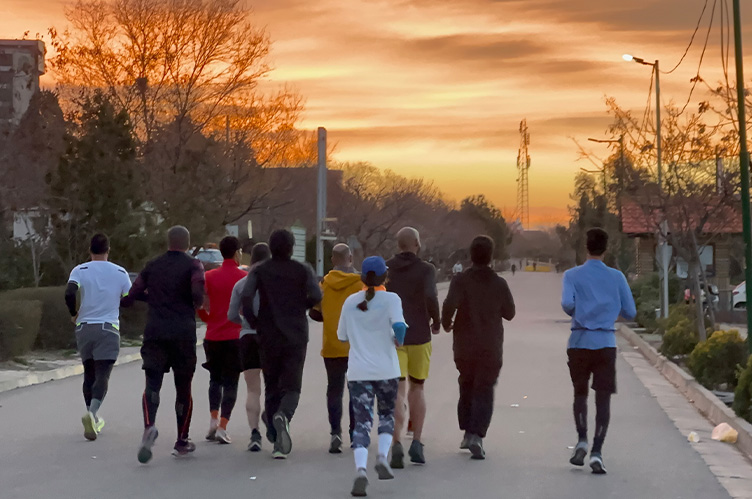
ط§غŒظ† ط±ط§ ظ†غŒط² ط¯ط± ظ†ط¸ط± ط¨ع¯غŒط±غŒط¯: ط¨ظ‡ ع¯ظپطھظ‡ ع©ط§ظ† ع†ط±ط®ظ‡â€Œظ‡ط§غŒ طھظ…ط±غŒظ†غŒ ظ†غŒظ…ظ‡ ظ…ط§ط±ط§طھظ† ظ…ط¹ظ…ظˆظ„ط§ظ‹ 10 طھط§ 12 ظ‡ظپطھظ‡ ط·ظˆظ„ ظ…غŒâ€Œع©ط´ط¯ ط¯ط± طط§ظ„غŒ ع©ظ‡ ع†ط±ط®ظ‡â€Œظ‡ط§غŒ طھظ…ط±غŒظ†غŒ ظ…ط§ط±ط§طھظ† ظ…ط¹ظ…ظˆظ„ط§ظ‹ 16 طھط§ 20 ظ‡ظپطھظ‡ ط·ظˆظ„ ظ…غŒâ€Œع©ط´ط¯.
ط§ظˆ ظ…غŒâ€Œع¯ظˆغŒط¯: آ«ط§غŒظ† ط¨ظ‡ ط§غŒظ† ظ…ط¹ظ†ط§ط³طھ ع©ظ‡ ط¨ط¯ظ† ط´ظ…ط§ ط¨ط±ط§غŒ ظ…ط¯طھ ط·ظˆظ„ط§ظ†غŒâ€Œطھط±غŒ ظپط´ط§ط±ظ‡ط§غŒ طھظ…ط±غŒظ† ط±ط§ طھطظ…ظ„ ظ…غŒâ€Œع©ظ†ط¯طŒ ط¨ظ†ط§ط¨ط±ط§غŒظ† ط§ظˆظ„ظˆغŒطھ ط¯ط§ط¯ظ† ط¨ظ‡ ط§ط³طھط±ط§ططھ ظˆ ط±غŒع©ط§ظˆط±غŒ ط¨ط³غŒط§ط± ظ…ظ‡ظ… ط§ط³طھ.آ»
ط³ط¹غŒ ع©ظ†غŒط¯ طھظ…ط±غŒظ†ط§طھ ط®ظˆط¯ ط±ط§ ط¨ط§ ط¯ظˆغŒط¯ظ† ط¨ط± ط±ظˆغŒ ط®ط§ع© غŒط§ ط³ظ†ع¯ ط±غŒط²ظ‡ ط¨ظ‡ ط¬ط§غŒ ظ¾غŒط§ط¯ظ‡â€Œط±ظˆ ط§ظ†ط¬ط§ظ… ط¯ظ‡غŒط¯ طھط§ ط¨ظ‡ ظ…ظپط§طµظ„ ط®ظˆط¯ ط§ط³طھط±ط§ططھ ط¯ظ‡غŒط¯ ظˆ ط¨ط§ ط§ط¶ط§ظپظ‡ ع©ط±ط¯ظ† طھظ…ط±غŒظ† ط¯ط± ط´غŒط¨ ظ†طظˆظ‡ ط§ط³طھظپط§ط¯ظ‡ ط§ط² ظ…ط§ظ‡غŒع†ظ‡â€Œظ‡ط§غŒ ط®ظˆط¯ ط±ط§ طھط؛غŒغŒط± ط¯ظ‡غŒط¯ ظˆ ط§ط² ط¢ط³غŒط¨â€Œظ‡ط§غŒ ظ†ط§ط´غŒ ط§ط² ظپط´ط§ط± ط¨غŒط´ ط§ط² طط¯ ط¬ظ„ظˆع¯غŒط±غŒ ع©ظ†غŒط¯.
ع†ع¯ظˆظ†ظ‡ ط¨ط±ظ†ط§ظ…ظ‡ طھظ…ط±غŒظ†غŒ ظ…ظ†ط§ط³ط¨ ظ…ط§ط±ط§طھظ† ط¨ط±ط§غŒ ظ…ط¨طھط¯غŒط§ظ† ط±ط§ ط¨غŒط§ط¨غŒط¯
ط¨ط§ ع¯ظˆع¯ظ„ ع©ط±ط¯ظ† “ط¨ط±ظ†ط§ظ…ظ‡ طھظ…ط±غŒظ†غŒ ظ…ط§ط±ط§طھظ†”طŒ 911000000 ظ†طھغŒط¬ظ‡ ط¸ط§ظ‡ط± ظ…غŒâ€Œط´ظˆط¯. ط¨ط§ ط§غŒظ† طط§ظ„طŒ ظ‡غŒع† ط¨ط±ظ†ط§ظ…ظ‡ طھظ…ط±غŒظ†غŒ ظ…ظ†ط§ط³ط¨غŒ ط¨ط±ط§غŒ ظ…ط¨طھط¯غŒط§ظ† ظˆط¬ظˆط¯ ظ†ط¯ط§ط±ط¯.
ع©ط§ظ† ظ…غŒâ€Œع¯ظˆغŒط¯: آ«ظ…ظ† ظ‡ظ…غŒط´ظ‡ ط¨ظ‡ ط¯ظˆظ†ط¯ع¯ط§ظ† ط®ظˆط¯ غŒط§ط¯ط¢ظˆط±غŒ ظ…غŒâ€Œع©ظ†ظ… ع©ظ‡ غŒع© ط¨ط±ظ†ط§ظ…ظ‡ ظ…ط§ط±ط§طھظ† ط¨ط§غŒط¯ ط¨ظ‡ ط¹ظ†ظˆط§ظ† غŒع© ط±ط§ظ‡ظ†ظ…ط§ ط¯ط± ظ‡ظ†ع¯ط§ظ… طھظ…ط±غŒظ† ط¯ط± ظ†ط¸ط± ع¯ط±ظپطھظ‡ ط´ظˆط¯. ط§ظ…ط§ ط¨ظ‡ ظ‡غŒع† ظˆط¬ظ‡ ظ†ط¨ط§غŒط¯ ظˆطغŒ ظ…ظ†ط²ظ„ ط¨ط§ط´ط¯! ط²ظ†ط¯ع¯غŒ ظ‡ظ…ع†ظ†ط§ظ† ط¯ط± طغŒظ†آ طھظ…ط±غŒظ†ط§طھ ظ…ط§ط±ط§طھظ† ط¯ط± ط¬ط±غŒط§ظ† ط§ط³طھ. ع©ط§ط±طŒ ط²ظ†ط¯ع¯غŒطŒ ط¢ط³غŒط¨â€Œط¯غŒط¯ع¯غŒâ€Œظ‡ط§طŒ ط±ظˆغŒط¯ط§ط¯ظ‡ط§غŒ ط¢ط¨â€Œظˆظ‡ظˆط§غŒغŒ ظ‡ظ…غŒط´ظ‡ ظˆط§ط±ط¯ ط¨ط§ط²غŒ ظ…غŒâ€Œط´ظˆظ†ط¯. ط¨ظ‡ ظ‡ظ…غŒظ† ط¯ظ„غŒظ„ ط¨ظ‡طھط±غŒظ† ط¨ط±ظ†ط§ظ…ظ‡â€Œظ‡ط§غŒ ظ…ظˆط¬ظˆط¯طŒ ظ¾ظˆغŒط§ ظˆ طھط§ طط¯ظˆط¯غŒ ط§ظ†ط¹ط·ط§ظپ‌ظ¾ط°غŒط± ظ‡ط³طھظ†ط¯ طھط§ ط¨طھظˆط§ظ†ظ†ط¯ ط§غŒظ† “ط³ط±ط¹طھ‌ع¯غŒط±ظ‡ط§” ط±ط§ ط¯ط± طھظ…ط±غŒظ† ط´ظ…ط§ ط¬ط§غŒ ط¯ظ‡ظ†ط¯.آ»
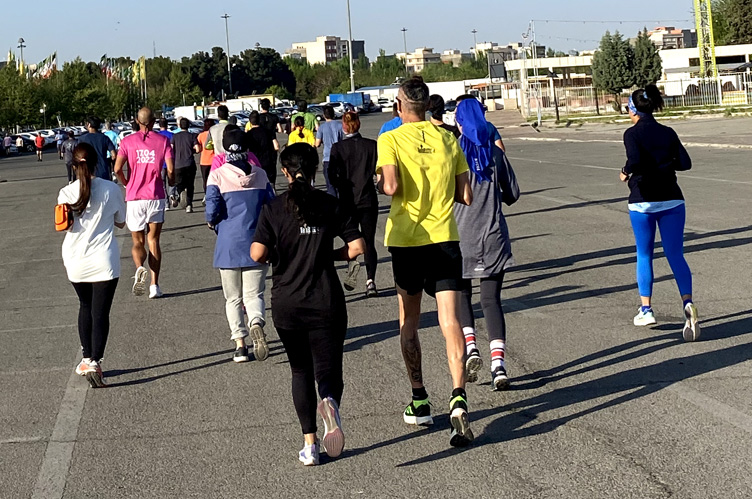
ط¯ط±ط³طھ ط§ط³طھ ع©ظ‡ ط¨ط±ظ†ط§ظ…ظ‡ طھظ…ط±غŒظ†غŒ ظ…ط§ط±ط§طھظ† ط¢غŒظ‡ ظ‚ط±ط¢ظ† ظ†غŒط³طھظ†ط¯طŒ ط§ظ…ط§ ط´ظ…ط§ ظ‡ظ… ظ†ط¨ط§غŒط¯ ط®ظˆط¯طھط§ظ† ط¨ظ‡ طھظ†ظ‡ط§غŒغŒ غŒع© ط¨ط±ظ†ط§ظ…ظ‡ ط¨ط±ط§غŒ ط®ظˆط¯طھط§ظ† ط¨ظ†ظˆغŒط³غŒط¯.
ظ‡ظ†ظˆظˆط¯ ظ…غŒâ€Œع¯ظˆغŒط¯: آ«ظ…ظ† طھظˆطµغŒظ‡ ظ…غŒâ€Œع©ظ†ظ… ظپط±ط¯غŒ ط±ط§ ظ¾غŒط¯ط§ ع©ظ†غŒط¯ ع©ظ‡ ط¨طھظˆط§ظ†ط¯ ط¨ظ‡ ط´ظ…ط§ ط¨ط§ط²ط®ظˆط±ط¯ ط¨ط¯ظ‡ط¯ ظˆ ط¨طھظˆط§ظ†ط¯ ط¯ط± طµظˆط±طھ ظ†غŒط§ط² ط¨ظ‡ ط´ظ…ط§ ع©ظ…ع© ع©ظ†ط¯ ط¨ط±ظ†ط§ظ…ظ‡â€Œطھط§ظ† ط±ط§ طھط؛غŒغŒط± ط¯ظ‡غŒط¯.”
ط§ع¯ط± غŒع© ط¬ظ„ط³ظ‡ ط¯ظˆغŒط¯ظ† ط±ط§ ط§ط² ط¯ط³طھ ط¨ط¯ظ‡غŒط¯ غŒع© ع†غŒط² ط§ط³طھ. ط§ظ…ط§ ط§ع¯ط± ط¨ظ‡ ط¯ظ„غŒظ„ ط¨غŒظ…ط§ط±غŒ ظ¾ظ†ط¬ ط±ظˆط² ظ…طھظˆط§ظ„غŒ ط±ط§ ط§ط² ط¯ط³طھ ط¨ط¯ظ‡غŒط¯ ع†ظ‡طں غŒع© ظ…ط±ط¨غŒ ظ…غŒâ€Œطھظˆط§ظ†ط¯ ط¨ظ‡ ط´ظ…ط§ ع©ظ…ع© ع©ظ†ط¯ طھط§آ ط¨ط§ طھظˆط¬ظ‡ ط¨ظ‡ ط¨ظ‡طھط±غŒظ† طط§ظ„طھ ظ…ظ…ع©ظ† ط¨ط±ط§غŒ ط¨ط¯ظ†طھط§ظ† ط¨ظ‡ ظ…ط³غŒط± ط¯ط±ط³طھ ط¨ط±ع¯ط±ط¯غŒط¯.آ»
ظ…ط·ظ…ط¦ظ† ط´ظˆغŒط¯ ع©ظ‡ ط¨ظ‡ ظ…ظˆط§ط±ط¯غŒ ظ…ط§ظ†ظ†ط¯ ط¢ظ…ظˆط²ط´ ظ¾ط§غŒظ‡ ظ…ظˆط±ط¯ ظ†غŒط§ط² ط¨ط±ط§غŒ ط§غŒظ† ط¨ط±ظ†ط§ظ…ظ‡ (ط¨ط§ ع†ظ†ط¯ ع©غŒظ„ظˆظ…طھط± ط¯ط± ظ‡ظپطھظ‡ ط´ط±ظˆط¹ ظ…غŒâ€Œط´ظˆط¯)طŒ ظ…ط¬ظ…ظˆط¹ ظ…ط³ط§ظپطھ ظ¾غŒظ…ظˆط¯ظ‡ ط´ط¯ظ‡ ط¯ط± ظ‡ظپطھظ‡ غŒط§ ط±ظˆط²ظ‡ط§غŒ ط¯ظˆغŒط¯ظ† ط¨ط±ظ†ط§ظ…ظ‡ طھظˆط¬ظ‡ ع©ظ†غŒط¯ (ط¢غŒط§ ط²ظ…ط§ظ† ظ„ط§ط²ظ… ط¨ط±ط§غŒ غŒع© ط¨ط±ظ†ط§ظ…ظ‡ ط¨ط§ ظ…ط³ط§ظپطھ ظ¾غŒظ…ظˆط¯ظ‡ ط´ط¯ظ‡ ط¨غŒط´طھط± ط±ط§ ط¯ط§ط±غŒط¯طں).
ط§غŒظ† ط¨ط±ظ†ط§ظ…ظ‡ ظ‡ط± ع†ظ†ط¯ ظˆظ‚طھ غŒع©â€Œط¨ط§ط± ط¨ظ‡ طھظ…ط±غŒظ†â€Œظ‡ط§غŒ ط؛غŒط± ظ…ط±طھط¨ط· ط¨ط§ ط¯ظˆغŒط¯ظ† ظ…غŒâ€Œظ¾ط±ط¯ط§ط²ط¯ ظˆ ط¯ط± ظ†ط¸ط± ط¨ع¯غŒط±غŒط¯ ع©ظ‡ ط§غŒظ† ظ…ظˆط§ط±ط¯ ع†ع¯ظˆظ†ظ‡ ط¨ط§ ط³ط§غŒط± ط¨ط±ظ†ط§ظ…ظ‡â€Œظ‡ط§غŒ ط²ظ†ط¯ع¯غŒ ط´ظ…ط§ ظ‡ظ…ط§ظ‡ظ†ع¯ ط®ظˆط§ظ‡ط¯ ط´ط¯.
طھظ…ط±غŒظ†ط§طھ ع©ط§ط±ط¯غŒظˆ ط؛غŒط± ظ…ط±طھط¨ط· ط¨ظ‡ ط¯ظˆغŒط¯ظ† ط¯ط± ط¨ط±ظ†ط§ظ…ظ‡ طھظ…ط±غŒظ†غŒ ظ…ط§ط±ط§طھظ† ط´ظ…ط§
ظ‡ظ†ظˆظˆط¯ ظ‚ط¨ظ„ط§ظ‹ ط¨ظ‡ ط§ظ‡ظ…غŒطھ طھظ…ط±غŒظ†ط§طھ ظ‚ط¯ط±طھغŒ ط§ط´ط§ط±ظ‡ ع©ط±ط¯ظ‡ ط¨ظˆط¯طŒ ط§ظ…ط§ ط¨غŒط§غŒغŒط¯ ط¯ط± ظ…ظˆط±ط¯ طھظ…ط±غŒظ†ط§طھ طھط±ع©غŒط¨غŒ (cross-training) طµطط¨طھ ع©ظ†غŒظ….
ط¨ط±ط®غŒ ط§ط² ط§ظپط±ط§ط¯ ظ…غŒâ€Œطھظˆط§ظ†ظ†ط¯ ظ¾ظ†ط¬ غŒط§ ط´ط´ ط±ظˆط² ط¯ط± ظ‡ظپطھظ‡ ط¯ظˆغŒط¯ظ† ط±ط§ طھطظ…ظ„ ع©ظ†ظ†ط¯ط› ط¨ط±ط§غŒ ط¨ط§ظ‚غŒ ط§ظپط±ط§ط¯طŒ ط§غŒظ† ط®غŒظ„غŒ ط²غŒط§ط¯ ط§ط³طھ.
ظ‡ظ†ظˆظˆط¯ ظ…غŒâ€Œع¯ظˆغŒط¯: آ«ظ…ظ† ط¯ظˆط³طھ ط¯ط§ط±ظ… ع©ظ‡ ظ…ط±ط¯ظ… ظ¾ظ†ط¬ ط±ظˆط² ط¯ط± ظ‡ظپطھظ‡ ع©ط§ط±ط¯غŒظˆ ط§ظ†ط¬ط§ظ… ط¯ظ‡ظ†ط¯.آ»
ع©ط§ط±ط¯غŒظˆ ظ…غŒ طھظˆط§ظ†ط¯ ط¯ظˆغŒط¯ظ†طŒ ط¯ظˆع†ط±ط®ظ‡ ط³ظˆط§ط±غŒطŒ ط§ط³طھظپط§ط¯ظ‡ ط§ط² ط§ط³ع©غŒâ€Œظپط¶ط§غŒغŒ (elliptical) غŒط§ ططھغŒ ط´ظ†ط§ ط¨ط§ط´ط¯.
ط§ظˆ ظ…غŒâ€Œع¯ظˆغŒط¯: آ«ظ…ظ† ط§ط³ع©غŒ ظپط¶ط§غŒغŒ ط±ط§ ط®غŒظ„غŒ ط¯ظˆط³طھ ط¯ط§ط±ظ… ط²غŒط±ط§ ط´ظ…ط§ ط¯ط± ظˆط¶ط¹غŒطھغŒ ظ…ط´ط§ط¨ظ‡ ط¯ظˆغŒط¯ظ† ظ‡ط³طھغŒط¯. ط¨ط§ط³ظ† ط¨ظ‡ ط¬ظ„ظˆطŒ ط³غŒظ†ظ‡ ط¨غŒط±ظˆظ†طŒ ظ¾ط§ظ‡ط§ ط±ط§ طط±ع©طھ ظ…غŒâ€Œط¯ظ‡غŒط¯ ظˆ ط´ظ†ط§ ظ…غŒâ€Œطھظˆط§ظ†ط¯ ط¨ظ‡ ظ‚ظˆغŒ ع©ط±ط¯ظ† ظ…ط§ظ‡غŒع†ظ‡â€Œظ‡ط§غŒ ط²غŒط± ط´ع©ظ…طŒ ظپظ„ع©ط³ظˆط±ظ‡ط§غŒ ظ„ع¯ظ† ظˆ ع©ظ…ط± ع©ظ…ع© ع©ظ†ط¯.آ».
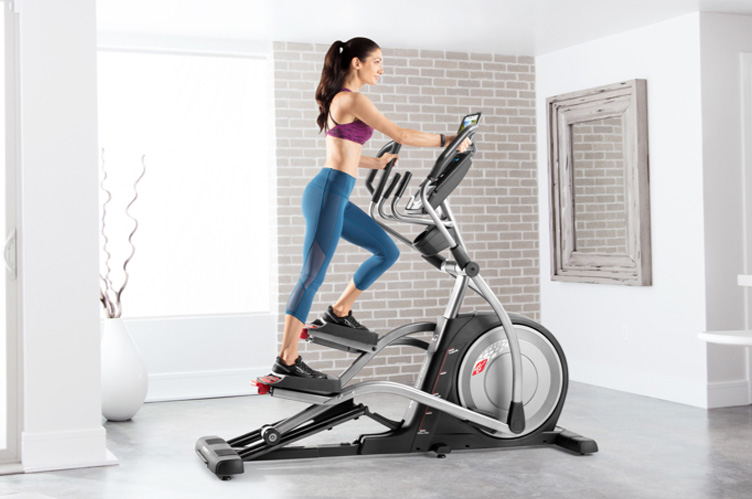
ع©ط§ظ† ظ…غŒâ€Œع¯ظˆغŒط¯: آ«ط§غŒظ† طھظ…ط±غŒظ†ط§طھ ط¨ظ‡ ط¯ظˆظ†ط¯ظ‡ ط§ط¬ط§ط²ظ‡ ظ…غŒâ€Œط¯ظ‡ط¯ طھط§ ط¨ط¯ظˆظ† ظ‡غŒع† ع¯ظˆظ†ظ‡ ط¶ط±ط¨ظ‡ غŒط§ ظپط´ط§ط± ط§ط¶ط§ظپغŒ ط¨ظ‡ ط¨ط¯ظ†طŒ طھظ…ط±غŒظ†ط§طھ ظ¾ط§غŒظ‡ ظ‡ظˆط§ط²غŒ ط±ط§ ط§ظ†ط¬ط§ظ… ط¯ظ‡ط¯آ» ظˆ ط§غŒظ† ط¨ظ‡ ط´ظ…ط§ ع©ظ…ع© ظ…غŒâ€Œع©ظ†ط¯ طھط§ ظˆط±ط²ط´ع©ط§ط± ظ‚ظˆغŒâ€Œطھط± ظˆ طھظˆط§ظ†ظ…ظ†ط¯طھط±غŒ ط¨ط§ط´غŒط¯. ط§غŒظ† ظ‡ظ…ط§ظ† ع†غŒط²غŒ ط§ط³طھ ع©ظ‡ ط¨ظ‡ ط´ظ…ط§ ع©ظ…ع© ط®ظˆط§ظ‡ط¯ ع©ط±ط¯ طھط§ ط¨ظ‡ ط®ط· ظ¾ط§غŒط§ظ† ط¨ط±ط³غŒط¯.
ظˆغŒ ظ…غŒâ€Œط§ظپط²ط§غŒط¯طŒ ظ‡ط± ظ†ظˆط¹ طھظ…ط±غŒظ† طھط±ع©غŒط¨غŒ ط¯غŒع¯ط±غŒ ع©ظ‡ ط¨ط± طھطط±ع© ع©ظ„غŒ ظˆ ظ‚ط¯ط±طھ ط¨ط¯ظ†غŒ (core strength) ط¯ظˆظ†ط¯ظ‡ طھط£ط«غŒط± ط¨ع¯ط°ط§ط±ط¯طŒ ظ‡ظ…ط²ظ…ط§ظ† ط¨ط§ ظ‡ط± ظ†ظˆط¹ ط¨ط±ظ†ط§ظ…ظ‡ طھظ…ط±غŒظ†غŒ ظ…ط§ط±ط§طھظ†غŒ ط¯ط± غŒع© ط±ط§ط³طھط§ط³طھ.
غŒظˆع¯ط§غŒ ظ…ظ„ط§غŒظ…طŒ ظ¾غŒظ„ط§طھط³طŒ ط¨ط±ظ‡ (barre) ظˆ طھظ…ط±غŒظ†ط§طھ ظ‚ط¯ط±طھغŒ ط¹ظ…ظˆظ…غŒ ظ‡ظ…ع¯غŒ ط¹ط§ظ„غŒ ظ‡ط³طھظ†ط¯ ط²غŒط±ط§ ظ…ط§ظ‡غŒع†ظ‡â€Œظ‡ط§غŒغŒ ط±ط§ طھظ‚ظˆغŒطھ ظ…غŒâ€Œع©ظ†ظ†ط¯ ع©ظ‡ ط§ط² طط±ع©طھ طھع©ط±ط§ط±غŒ ع©ظ‡ ط¨ط¯ظ† ط¯ط± ظ‡ظ†ع¯ط§ظ… ط¯ظˆغŒط¯ظ† ظ…طھطظ…ظ„ ظ…غŒâ€Œط´ظˆط¯طŒ ظ¾ط´طھغŒط¨ط§ظ†غŒ ظ…غŒâ€Œع©ظ†ط¯.
ع†ط±ط§ ط±غŒع©ط§ظˆط±غŒ ط¨ط³غŒط§ط± ظ…ظ‡ظ… ط§ط³طھ
ط´ظ…ط§ ططھظ…ط§ ط¨ط§غŒط¯ ط±غŒع©ط§ظˆط±غŒ ط±ط§ ط¯ط± ط¨ط±ظ†ط§ظ…ظ‡ طھظ…ط±غŒظ†غŒ ظ…ط§ط±ط§طھظ† ط®ظˆط¯ ط¨ط±ط§غŒ ظ…ط¨طھط¯غŒط§ظ† (ظˆ ط¨ط±ط§غŒ ظ‡ظ…ظ‡ ط³ط·ظˆط!) ظ‚ط±ط§ط± ط¯ظ‡غŒط¯.
ط±غŒع©ط§ظˆط±غŒ ط¯ط± ظˆط§ظ‚ط¹ ط²ظ…ط§ظ†غŒ ط§ط³طھ ع©ظ‡ ط¯ط³طھط§ظˆط±ط¯ظ‡ط§غŒ ط´ظ…ط§ ط¹غŒظ†غŒ ط´ظˆظ†ط¯ط› ظˆ ط¢ظ† ط²ظ…ط§ظ†غŒ ط§ط³طھ ع©ظ‡ ط¹ط¶ظ„ط§طھ ط´ظ…ط§ ظ¾ط³ ط§ط² ظپط´ط§ط±ظ‡ط§غŒ ظ…ع©ط±ط± طھظ…ط±غŒظ†طŒ ط¨ط§ظ„ط§ط®ط±ظ‡ ط²ظ…ط§ظ† ظ„ط§ط²ظ… ط¨ط±ط§غŒ طھط±ظ…غŒظ… ظˆ ط¨ط§ط²ط³ط§ط²غŒ ط®ظˆط¯ ط±ط§ ط¯ط§ط±ظ†ط¯.

ع©ط§ظ† ظ…غŒâ€Œع¯ظˆغŒط¯: آ«ط±ظˆط²ظ‡ط§غŒ ط±غŒع©ط§ظˆط±غŒ ط¨ط±ط§غŒ ع©ظ…ع© ط¨ظ‡ ط´ظ„ ظ†ع¯ظ‡ ط¯ط§ط´طھظ† غŒع© ط¯ظˆظ†ط¯ظ‡ ظˆ ط¨ظ‡ طط¯ط§ظ‚ظ„ ط±ط³ط§ظ†ط¯ظ† ط³ظپطھغŒ ط¹ط¶ظ„ط§طھ ط¯ط± ط¨غŒظ† طھظ…ط±غŒظ†ط§طھ ط³ط®طھ ط¹ط§ظ„غŒ ظ‡ط³طھظ†ط¯. ظ…ظ† ط¯ظˆط³طھ ط¯ط§ط±ظ… ظ†ط±ظ… ط¯ظˆغŒ ط±ط§ طھظ‚ط±غŒط¨ط§ظ‹ ط¨ظ‡â€Œط¹ظ†ظˆط§ظ† ظ…ط§ط³ط§عک ط¨ط±ط§غŒ ط¨ط¯ظ† ط¯ط± ظ†ط¸ط± ط¨ع¯غŒط±ظ…. ط¢ظ†ظ‡ط§ ط¨ظ‡ ع¯ط±ط¯ط´ ع©ظ„غŒ ظˆ ط¬ط±غŒط§ظ† ط®ظˆظ† ط¨ظ‡ ظ…ظپط§طµظ„ ظˆ ظ…ط§ظ‡غŒع†ظ‡â€Œظ‡ط§ ع©ظ…ع© ظ…غŒâ€Œع©ظ†ظ†ط¯ ظˆ ط¯ط± ظ†طھغŒط¬ظ‡ ط¨ط§ ط§ظ„طھظ‡ط§ط¨ ظ…ظ‚ط§ط¨ظ„ظ‡ ظ…غŒâ€Œع©ظ†ظ†ط¯.آ»
ظ†ط±ظ… ط¯ظˆغŒâ€Œظ‡ط§غŒ ط³ط¨ع©طŒ غŒظˆع¯ط§غŒ ظ…ظ„ط§غŒظ…طŒ ط¯ظˆع†ط±ط®ظ‡â€Œط³ظˆط§ط±غŒ ظ†ط±ظ…طŒ ط§ط³ع©غŒ ظ‡ظˆط§غŒغŒ غŒط§ ططھغŒ غŒع© ظ¾غŒط§ط¯ظ‡â€Œط±ظˆغŒ ع©ظˆطھط§ظ‡طŒ ظ‡ظ…ظ‡ ط§ظژط´ع©ط§ظ„ ط¹ط§ظ„غŒ ط¨ط±ط§غŒ ط±غŒع©ط§ظˆط±غŒ ظپط¹ط§ظ„ ظˆ ظ…ظ„ط§غŒظ… ظ‡ط³طھظ†ط¯.
ط§ظˆ ظ…غŒâ€Œع¯ظˆغŒط¯: آ«ظ…ظ† ط¯ظˆط³طھ ط¯ط§ط±ظ… غŒع© طھظ…ط±غŒظ† ظ…ظ„ط§غŒظ… غŒط§ غŒع© ط±ظˆط² ط§ط³طھط±ط§ططھ ط±ط§ ط¯ط± ط¨غŒظ† ط¯ظˆ طھظ…ط±غŒظ† ط³ط®طھ ط¯ط± غŒع© ط¨ط±ظ†ط§ظ…ظ‡ طھظ…ط±غŒظ†غŒ ظ‚ط±ط§ط± ط¯ظ‡ظ… ظˆ ط¨ط¹ط¯ ط§ط² غŒع© طھظ…ط±غŒظ† ط¨ط³غŒط§ط± ط³ط®طھطŒ ظ‡ط± ط¯ظˆ ظ¾ط´طھ ط³ط± ظ‡ظ… (ط§ط³طھط±ط§ططھطŒ ط¨ظ‡ ط¯ظ†ط¨ط§ظ„ ط¢ظ† ط±غŒع©ط§ظˆط±غŒ) ظ‚ط¨ظ„ ط§ط² ط§غŒظ†ع©ظ‡ غŒع© ط±ظˆط² ط³ط®طھ ط¯غŒع¯ط± ط¯ط§ط´طھظ‡ ط¨ط§ط´ظ…طŒ ط³ط§ظ†ط¯ظˆغŒع† ع©ظ†ظ….آ»
ظˆط³ط§غŒظ„غŒ ع©ظ‡ ط¨ط±ط§غŒ ط¯ظˆغŒط¯ظ† ظ…ط§ط±ط§طھظ† ظ†غŒط§ط² ط¯ط§ط±غŒط¯
ط§غŒظ† ع©ظ‡ ط¨ط±ط§غŒ طھظ…ط±غŒظ† ظˆ ط¯ظˆغŒط¯ظ† ظ…ط§ط±ط§طھظ† ع†ظ‡ ط¨ظ¾ظˆط´غŒط¯ طھظ‚ط±غŒط¨ط§ظ‹ ط¨ظ‡ ط®ظˆط¯طھط§ظ† ط¨ط³طھع¯غŒ ط¯ط§ط±ط¯. ط§ظ…ط§ ظ…ظ‡ظ…طھط±غŒظ† ع†غŒط² (ظ…ط´ط®طµط§) ع©ظپط´ ظˆط±ط²ط´غŒ ط´ظ…ط§ ط§ط³طھ.
ط¨ظ‡ ط§ططھظ…ط§ظ„ ط²غŒط§ط¯طŒ ط§غŒظ† ط¹ط²غŒط²ط§ظ† طط¯ظˆط¯ 321 ع©غŒظ„ظˆظ…طھط± طھظ…ط±غŒظ† ط±ظˆط² ظ‚ط¨ظ„ ط§ط² ظ…ط³ط§ط¨ظ‚ظ‡ ط±ط§ طھطظ…ظ„ ط®ظˆط§ظ‡ظ†ط¯ ع©ط±ط¯. ط¨ظ†ط§ط¨ط±ط§غŒظ† ط´ظ…ط§ ظ…غŒâ€Œط®ظˆط§ظ‡غŒط¯ ط¯ط± ط¢ظ†ظ‡ط§ ط§طط³ط§ط³ ط±ط§ططھغŒ ع©ظ†غŒط¯.
ع©ط§ظ† ظ…غŒâ€Œع¯ظˆغŒط¯: آ«ظ‡ظ†ع¯ط§ظ… ط§ظ†طھط®ط§ط¨ غŒع© ع©ظپط´طŒ ظ…ظ† ط¯ظˆظ†ط¯ع¯ط§ظ† ط±ط§ طھط´ظˆغŒظ‚ ظ…غŒâ€Œع©ظ†ظ… ط¬ظپطھغŒ ط±ط§ ط§ظ†طھط®ط§ط¨ ع©ظ†ظ†ط¯ ع©ظ‡ ط¨ط§ ط¢ظ† ط§طط³ط§ط³ غŒع©غŒ ط¨ظˆط¯ظ† ط¯ط§ط±ظ†ط¯. ط¢ظ†ظ‡ط§ ط¨ط§غŒط¯ ط¨ط§ ع©ظپط´ ط±ط§ططھ ط¨ط§ط´ظ†ط¯ ظˆ ط§طط³ط§ط³ ع©ظ†ظ†ط¯ ع©ظ‡ ع©ظپط´ ط§ط² ط¢ظ† طظ…ط§غŒطھ ظ…غŒâ€Œع©ظ†ط¯طŒ ط§ظ…ط§ ظ„ط²ظˆظ…ط§ ظ†ط¨ط§غŒط¯ ط¨غŒط´ ط§ط² طط¯ ط§ط² طط¶ظˆط± ط¢ظ† ع©ظپط´ ط¢ع¯ط§ظ‡ ط¨ط§ط´ظ†ط¯.آ»
ظ…ظپظ‡ظˆظ…ط´ ط±ط§ ط¯ط±ع© ظ†ظ…غŒâ€Œع©ظ†غŒط¯طں
ظ‡ظ†ظˆظˆط¯ ظ…غŒâ€Œع¯ظˆغŒط¯ ط¨ظ‡ غŒع© ظپط±ظˆط´ع¯ط§ظ‡ طھط®طµطµغŒ ط¯ظˆغŒط¯ظ† ط¨ط±ظˆغŒط¯طŒ ط¬ط§غŒغŒ ع©ظ‡ ظ…غŒâ€Œطھظˆط§ظ†غŒط¯ ع©ظپط´â€Œظ‡ط§غŒغŒ ط±ط§ طھظ‡غŒظ‡ ع©ظ†غŒط¯ ع©ظ‡ ط¨ط±ط§غŒ ط±ط§ظ‡ ط±ظپطھظ† ظˆ ط§ظ‡ط¯ط§ظپ ط´ظ…ط§ ظ…ظ†ط§ط³ط¨ ط§ط³طھ.
آ«ع©ط§ط±ط´ظ†ط§ط³ط§ظ† ط¢ظ†ط¬ط§ ظ…غŒâ€Œطھظˆط§ظ†ظ†ط¯ ط¨ظ‡ ط´ظ…ط§ ع©ظ…ع© ع©ظ†ظ†ط¯ طھط§ ط¨ظپظ‡ظ…غŒط¯ ع©ظ‡ ط¢غŒط§ ط´ظ…ط§ غŒع© ظ¾ط±ظˆظ†ط§طھظˆط± (pronator) ظ‡ط³طھغŒط¯ غŒط§ غŒع© ط³ظˆظ¾غŒظ†ط§طھظˆط±(supinator).
ط¢غŒط§ ط¨ظ‡ غŒع© ع©ظپط´ ظ†ظˆطھط±ط§ظ„ (neutral) ظ†غŒط§ط² ط¯ط§ط±غŒط¯ غŒط§ ط§ط³طھغŒط¨ظ„ط§غŒط²غŒظ†ع¯ (stabilizing)طŒ ظˆ ط¨ط§ طھظˆط¬ظ‡ ط¨ظ‡ ط§غŒظ† ظ…ظˆط§ط±ط¯ ط¨ط±ظ†ط¯غŒ ط±ط§ ط¨ظ‡ ط´ظ…ط§ ظ…ط¹ط±ظپغŒ ظ…غŒâ€Œع©ظ†ظ†ط¯.آ»

ط¨ط±ط§غŒ ط¯ظˆ ط§ط³طھظ‚ط§ظ…طھطŒ ع©ط§ظ† طھظˆطµغŒظ‡ ظ…غŒâ€Œع©ظ†ط¯ ط¨ظ‡ ط¯ظ†ط¨ط§ظ„ ط¬ط°ط¨ ط¶ط±ط¨ظ‡ ط¨غŒط´طھط± ط±ظˆغŒ ع©ظپط´â€Œظ‡ط§غŒغŒ ط¨ط§ط´غŒط¯ ع©ظ‡ ط¨ط§ظ„ط´طھع© ع©ظ…طھط±غŒ ط¯ط§ط±ظ†ط¯طŒ ط¨ظ‡â€ŒظˆغŒعکظ‡ ط¨ط±ط§غŒ ط¯ظˆظ†ط¯ع¯ط§ظ† ظ…ط§ط±ط§طھظ† طھط§ط²ظ‡â€Œع©ط§ط±. ط§غŒظ† ظ†ع©طھظ‡ ط¨ظ‡ ظ…طط§ظپط¸طھ ط§ط² ظ¾ط§غŒ ط´ظ…ط§ ط¯ط± ط¨ط±ط§ط¨ط± طھط£ط«غŒط± ط§ظپط²ط§غŒط´ ظ…ط³ط§ظپطھ ظ¾غŒظ…ظˆط¯ظ‡ ط´ط¯ظ‡ ع©ظ…ع© ظ…غŒâ€Œع©ظ†ط¯.
ط¨ط§ ظ‡ط± ط¯ظˆظ†ط¯ظ‡ ظ…ط§ط±ط§طھظ† ط¨ط§ طھط¬ط±ط¨ظ‡â€Œط§غŒ ع©ظ‡ طµطط¨طھ ع©ظ†غŒط¯طŒ ط§ططھظ…ط§ظ„ط§ظ‹ ط¨ظ‡ ط´ظ…ط§ ط®ظˆط§ظ‡ظ†ط¯ ع¯ظپطھ ع©ظ‡ ط¯ط± ط±ظˆط² ظ…ط³ط§ط¨ظ‚ظ‡ ع†غŒط² ط¬ط¯غŒط¯غŒ ظ†ظ¾ظˆط´غŒط¯. ط¯ط± ط·ظˆظ„ طھظ…ط±غŒظ†طŒ ط¢ظ†ع†ظ‡ ط±ط§ ع©ظ‡ ظپع©ط± ظ…غŒâ€Œع©ظ†غŒط¯ ط¯ط± ط·ظˆظ„ ظ…ط³ط§ط¨ظ‚ظ‡ ظ…غŒâ€Œظ¾ظˆط´غŒط¯ غŒط§ طظ…ظ„ ظ…غŒâ€Œع©ظ†غŒط¯ ط¨ظ¾ظˆط´غŒط¯.
ط§غŒظ† غŒط¹ظ†غŒ ع©ظپط´طŒ ظ„ط¨ط§ط³طŒ ط¨ط§ط²ظˆط¨ظ†ط¯طŒ ع©ظ…ط±ط¨ظ†ط¯طŒ ط¨ط·ط±غŒâ€Œظ‡ط§غŒ ط¢ط¨ ط¯ط³طھغŒ ظˆ ظ‡ط± ع†غŒط² ط¯غŒع¯ط±غŒ. ع©ط§ظ† ظ…غŒâ€Œع¯ظˆغŒط¯: آ«ظ‡ط±ع†ظ‡ ط²ظˆط¯طھط± ط¨طھظˆط§ظ†غŒط¯ ط¨ظپظ‡ظ…غŒط¯ ع†ظ‡ ع†غŒط²غŒ ط¨ط±ط§غŒ ط´ظ…ط§ ظ…ظپغŒط¯ ط§ط³طھطŒ ط¨ظ‡طھط± ط§ط³طھ.آ»
ظ‚ط¨ظ„ ط§ط² ظ…ط§ط±ط§طھظ† ظˆ ط¯ط± ط·ظˆظ„ ط¢ظ† ع†ظ‡ ط¨ط§غŒط¯ ط¨ط®ظˆط±غŒط¯طں
ع©ظ„غŒ ط¬ظˆظ†ط² ظ…طھط®طµطµ طھط؛ط°غŒظ‡ ظˆط±ط²ط´غŒ ط§ظ‡ظ„ ظپغŒظ„ط§ط¯ظ„ظپغŒط§ (road runner) ظ…غŒâ€Œع¯ظˆغŒط¯طŒ ظˆظ‚طھغŒ ط¯ط± طط§ظ„ طھظ…ط±غŒظ† ظ…ط§ط±ط§طھظ† ظ‡ط³طھغŒط¯طŒ ظ†ظ‚ط´ طھط؛ط°غŒظ‡ ط¯ط± ط¨ط§ظ„ط§ ظ†ع¯ظ‡ ط¯ط§ط´طھظ† ط§ظ†ط±عکغŒطŒ ط¹ط¶ظ„ط§طھ ظ‚ظˆغŒ ظˆ ط³ظˆط®طھ ط¨ط¯ظ† ط¨ط±ط§غŒ ط·غŒ ظ…ط³ط§ظپطھ ط±ط§ ط¯ط³طھ ع©ظ… ظ†ع¯غŒط±غŒط¯ – ط±عکغŒظ… ط؛ط°ط§غŒغŒ ط´ظ…ط§ ط¨ط§غŒط¯ طھط؛غŒغŒط± ع©ظ†ط¯ طھط§ ط§ظپط²ط§غŒط´ ظ†غŒط§ط² ط´ظ…ط§ ط¨ظ‡ ط§ظ†ط±عکغŒ ط±ط§ ط¨ط±ط¢ظˆط±ط¯ظ‡ ع©ظ†ط¯.
ط§ظˆ ظ…غŒâ€Œع¯ظˆغŒط¯: آ«ط¨ط§ ط§ظپط²ط§غŒط´ ظ…ط³ط§ظپطھ ظ¾غŒظ…ظˆط¯ظ‡ ط´ط¯ظ‡طŒ ظ…غŒط²ط§ظ† ط§ظ†ط±عکغŒ ع©ظ‡ ط§ط² ع©ط±ط¨ظˆظ‡غŒط¯ط±ط§طھ ظ…غŒâ€Œع¯غŒط±غŒط¯ ظ†غŒط² ط¨ط§غŒط¯ ط§ظپط²ط§غŒط´ غŒط§ط¨ط¯.آ» ط§ظ…ط§ ظ…ط·ظ…ط¦ظ† ط´ظˆغŒط¯ ع©ظ‡ ظ…غŒط²ط§ظ† ع©ط±ط¨ظˆظ‡غŒط¯ط±ط§طھ‌ظ‡ط§غŒ ط¨ط§ع©غŒظپغŒطھ ظ…ط§ظ†ظ†ط¯ ع©غŒظ†ظˆط§ (quinoa)طŒ ظ†ط§ظ† ط؛ظ„ط§طھ ع©ط§ظ…ظ„طŒ ط¬ظˆطŒ ط³غŒط¨â€Œط²ظ…غŒظ†غŒ ط´غŒط±غŒظ† ظˆ ظ…ظˆط² ط±ط§ ظ†ط³ط¨طھ ط¨ظ‡ ع©ط±ط¨ظˆظ‡غŒط¯ط±ط§طھ‌ظ‡ط§غŒ ظ…طµظ†ظˆط¹غŒ ظˆ ظپط±ط¢ظˆط±غŒ ط´ط¯ظ‡ ط§ظپط²ط§غŒط´ ط¯ظ‡غŒط¯.

ط§ظˆ ظ…غŒâ€Œع¯ظˆغŒط¯ ع©ظ‡ ط¯ظˆظ†ط¯ع¯ط§ظ† ط§ط³طھظ‚ط§ظ…طھغŒ ظ‡ظ…ع†ظ†غŒظ† ط¨ط§غŒط¯ ظ…غŒط²ط§ظ† ظ…طµط±ظپ ط³ط¯غŒظ…طŒ ع©ظ„ط³غŒظ…طŒ ط¢ظ‡ظ† ظˆ ظˆغŒطھط§ظ…غŒظ† C ط±ط§ ظ†غŒط² ط§ظپط²ط§غŒط´ ط¯ظ‡ظ†ط¯.
ط¬ظˆظ†ط² طھظˆط¶غŒط ظ…غŒâ€Œط¯ظ‡ط¯: آ«ط³ط¯غŒظ… ظ…ط§ط¯ظ‡ ظ…ط؛ط°غŒ ط§طµظ„غŒ طھظ„ظپ ط´ط¯ظ‡ ط§ط² ط·ط±غŒظ‚ ط¹ط±ظ‚ ط§ط³طھ ع©ظ‡ ط¨ط§غŒط¯ ط¨ط±ط§غŒ طھط¹ط§ط¯ظ„ ظ…ط§غŒط¹ط§طھ ط¬ط§غŒع¯ط²غŒظ† ط´ظˆط¯ ظˆ ع©ظ„ط³غŒظ… ط¨ط±ط§غŒ ع©ظ†طھط±ظ„ ظپط´ط§ط± ظ…ط¶ط§ط¹ظپغŒ ع©ظ‡ ط¨ظ‡ ط§ط³طھط®ظˆط§ظ†â€Œظ‡ط§ ظˆط§ط±ط¯ ظ…غŒâ€Œط´ظˆط¯. ط§غŒظ†ظ‡ط§ ط¨ط±ط§غŒ ط§ظ†ظ‚ط¨ط§ط¶ط§طھ ط¹ط¶ظ„ط§ظ†غŒ ظ†غŒط² ط¶ط±ظˆط±غŒ ط§ط³طھآ».
ط§ط² ط¢ظ†ط¬ط§غŒغŒ ع©ظ‡ ط¢ظ‡ظ† ط§ع©ط³غŒعکظ† ط±ط§ ط¯ط± ط®ظˆظ† طظ…ظ„ ظ…غŒâ€Œع©ظ†ط¯ ظˆ ظ…طµط±ظپ ط§ع©ط³غŒعکظ† ط¨ط§ ط¨ط§ظ„ط§ ط±ظپطھظ† ظ…ط³ط§ظپطھ ظ¾غŒظ…ظˆط¯ظ‡ ط´ط¯ظ‡ ط¨غŒط´طھط± ظ…غŒâ€Œط´ظˆط¯طŒ ع¯ط±ط¯ط´ ع¯ظ„ط¨ظˆظ„‌ظ‡ط§غŒ ظ‚ط±ظ…ط² ط®ظˆظ† ظˆط¢ظ‡ظ† ط§ظپط²ط§غŒط´ ظ…غŒâ€ŒغŒط§ط¨ط¯ط› ط¯ط± ظ†ظ‡ط§غŒطھطŒ ظˆغŒطھط§ظ…غŒظ† C ط¨ط±ط§غŒ ظ…طط§ظپط¸طھ ط§ط² ط±غŒظ‡â€Œظ‡ط§ ط¯ط± ط¨ط±ط§ط¨ط± ظپط´ط§ط± ط¨غŒط´طھط±غŒ ع©ظ‡ ط¨ظ‡ ط¢ظ†ظ‡ط§ ظˆط§ط±ط¯ ظ…غŒâ€Œط´ظˆط¯ ظ…ظ‡ظ… ط§ط³طھ.
ط¯ط± ط±ظˆط² ظ…ط³ط§ط¨ظ‚ظ‡طŒ ظ…ط·ظ…ط¦ظ†ط§ظ‹ ط®ظˆط±ط§ع©غŒâ€Œظ‡ط§غŒ طھظ‚ظˆغŒطھغŒ ط¨ط§غŒط¯ ظ‡ظ…ط±ط§ظ‡طھط§ظ† ط¯ط§ط´طھظ‡ ط¨ط§ط´غŒط¯ (ط¨ط¯ظ† ط´ظ…ط§ ط§ط² ط·ط±غŒظ‚ ط°ط®ط§غŒط± ع¯ظ„غŒع©ظˆعکظ† غŒط§ ظ‚ظ†ط¯ ط®ظˆط¯ طھط§ 32 ع©غŒظ„ظˆظ…طھط± ط±ط§ ط¯ظˆط§ظ… ظ…غŒâ€Œط¢ظˆط±ط¯طŒ ع©ظ‡ ظ…ط¹ظ…ظˆظ„ط§ظ‹ ط¨ظ‡ ط¹ظ†ظˆط§ظ† “ط¯غŒظˆط§ط±” ط¯ط± ط¯ظˆغŒ ظ…ط§ط±ط§طھظ† ط´ظ†ط§ط®طھظ‡ ظ…غŒâ€Œط´ظˆط¯).
ط¬ظˆظ†ط² ظ…غŒâ€Œع¯ظˆغŒط¯: آ«ظ‡ظ…ط±ط§ظ‡ ط¯ط§ط´طھظ† ط³ظˆط®طھ (ط®ظˆط±ط§ع©غŒâ€Œظ‡ط§غŒ ظ…ظ†ط§ط³ط¨) ط¨ط±ط§غŒ ط¯ظˆغŒط¯ظ†â€Œظ‡ط§غŒ ط¨ط§ظ„ط§غŒ 60 ط¯ظ‚غŒظ‚ظ‡ ظ…ظپغŒط¯ ط§ط³طھ. ظ‡ظ†ع¯ط§ظ… طھظ…ط±غŒظ† ط¨ط±ط§غŒ غŒع© ظ…ط³ط§ط¨ظ‚ظ‡ ظ…ظ‡ظ… ط§ط³طھ ع©ظ‡ ط´ع©ظ… ط®ظˆط¯ ط±ط§ ظ†غŒط² ط¨ط±ط§غŒ ط¯ط±غŒط§ظپطھ ع©ط±ط¨ظˆظ‡غŒط¯ط±ط§طھ‌ظ‡ط§ ظˆ ظ‡ط¶ظ… ط¢ظ†ظ‡ط§ ط¯ط± طغŒظ† ظˆط±ط²ط´ ط¢ظ…ظˆط²ط´ ط¯ظ‡غŒط¯ طھط§ ط¨ط¹ط¯ط§ظ‹ ط¯ع†ط§ط± ظ†ط§ط±ط§ططھغŒ ع¯ظˆط§ط±ط´غŒ ظ†ط´ظˆغŒط¯.

ع©ط±ط¨ظˆظ‡غŒط¯ط±ط§طھ‌ظ‡ط§غŒ ط¢ط³ط§ظ† ظ‡ط¶ظ… ظ…ط§ظ†ظ†ط¯ عکظ„‌ظ‡ط§ غŒط§ ططھغŒ ط®ط±ظ…ط§ظ‡ط§غŒ ظ†ظ…ع©غŒ ظˆ ط¨ط³طھظ‡â€Œظ‡ط§غŒ ط¹ط³ظ„ ط±ط§ ط§ظ…طھطط§ظ† ع©ظ†غŒط¯. ع†غŒط²غŒ ع©ظ‡ ط¨ط±ط§غŒ ط¯ظˆط³طھ غŒط§ ظ…ط±ط¨غŒ ط´ظ…ط§ ظ…ظپغŒط¯ ط§ط³طھ ظ…ظ…ع©ظ† ط§ط³طھ ط¨ط±ط§غŒ ط´ظ…ط§ ظ…ظپغŒط¯ ظ†ط¨ط§ط´ط¯. ط¨ظ†ط§ط¨ط±ط§غŒظ† ظ‡ظ…ط§ظ†ط·ظˆط± ع©ظ‡ ط¯ط± ظ„ط¨ط§ط³غŒ ع©ظ‡ ظ‚ط±ط§ط± ط§ط³طھ ط¨ط±ط§غŒ ظ…ط³ط§ط¨ظ‚ظ‡ ط¨ظ¾ظˆط´غŒط¯ طھظ…ط±غŒظ† ظ…غŒâ€Œع©ظ†غŒط¯طŒ ظ…ط·ظ…ط¦ظ† ط´ظˆغŒط¯ ع©ظ‡ ظ‚ط¨ظ„ ط§ط² ط±ظˆط² ظ…ط³ط§ط¨ظ‚ظ‡ ط³ظˆط®طھ ط±ط³ط§ظ†غŒ ط±ط§ ط¯ط± ظ…ط³غŒط±ظ‡ط§غŒ ط·ظˆظ„ط§ظ†غŒ طھظ…ط±غŒظ† ع©ظ†غŒط¯ طھط§ ظ‡غŒع† ع†غŒط² ط؛ط§ظپظ„ع¯غŒط± ع©ظ†ظ†ط¯ظ‡â€Œط§غŒ ط¯ط± ظ…ط³غŒط± ظˆط¬ظˆط¯ ظ†ط¯ط§ط´طھظ‡ ط¨ط§ط´ط¯.
ظ…ط«ظ„ط§ ط§غŒظ†ع©ظ‡ ظ†ط§ع¯ظ‡ط§ظ† ظ…ط¬ط¨ظˆط± ط´ظˆغŒط¯ ط¨ظ‡ ط¯ط³طھط´ظˆغŒغŒ ط¨ط±ظˆغŒط¯. ط¨ظ‡ غŒط§ط¯ ط¯ط§ط´طھظ‡ ط¨ط§ط´غŒط¯: ظ‡ط±ع¯ط² ط¨ظ‡ ع¯ظˆط² ط¨ط¹ط¯ ط§ط² ع©غŒظ„ظˆظ…طھط± 14 ط§ط¹طھظ…ط§ط¯ ظ†ع©ظ†غŒط¯.
Cr: www.shape.com




 ط§ظ„ع©طھط±ظˆظ„غŒطھ‌ظ‡ط§ ط¹ط¨ط§ط±طھظ†ط¯ ط§ط² ظ…ظˆط§ط¯ ظ…ط¹ط¯ظ†غŒ ط³ط¯غŒظ…طŒ ع©ظ„ط±غŒط¯طŒ ظ¾طھط§ط³غŒظ…طŒ ظ…ظ†غŒط²غŒظ… ظˆ ع©ظ„ط³غŒظ…. ط¬ط§غŒع¯ط²غŒظ†غŒ ظ‡ظ…ظ‡ ط§غŒظ† ظ…ظˆط§ط¯ ظ…ط¹ط¯ظ†غŒ ظ…ظ‡ظ… ط§ط³طھ. ط¨ط§ ط§غŒظ† طط§ظ„طŒ ط³ط¯غŒظ… ظ…ظ‡ظ…طھط±غŒظ† ط§ظ„ع©طھط±ظˆظ„غŒطھغŒط³طھ ع©ظ‡ ط¨ط§غŒط¯ ط¯ط± ط·ظˆظ„ ط¯ظˆغŒط¯ظ† ط¨ظ‡ ط³ط·ط ظ‚ط¨ظ„غŒ ط®ظˆط¯ ط¨ط§ط²ع¯ط±ط¯ط§ظ†ط¯ظ‡ ط´ظˆط¯.
ط§ظ„ع©طھط±ظˆظ„غŒطھ‌ظ‡ط§ ط¹ط¨ط§ط±طھظ†ط¯ ط§ط² ظ…ظˆط§ط¯ ظ…ط¹ط¯ظ†غŒ ط³ط¯غŒظ…طŒ ع©ظ„ط±غŒط¯طŒ ظ¾طھط§ط³غŒظ…طŒ ظ…ظ†غŒط²غŒظ… ظˆ ع©ظ„ط³غŒظ…. ط¬ط§غŒع¯ط²غŒظ†غŒ ظ‡ظ…ظ‡ ط§غŒظ† ظ…ظˆط§ط¯ ظ…ط¹ط¯ظ†غŒ ظ…ظ‡ظ… ط§ط³طھ. ط¨ط§ ط§غŒظ† طط§ظ„طŒ ط³ط¯غŒظ… ظ…ظ‡ظ…طھط±غŒظ† ط§ظ„ع©طھط±ظˆظ„غŒطھغŒط³طھ ع©ظ‡ ط¨ط§غŒط¯ ط¯ط± ط·ظˆظ„ ط¯ظˆغŒط¯ظ† ط¨ظ‡ ط³ط·ط ظ‚ط¨ظ„غŒ ط®ظˆط¯ ط¨ط§ط²ع¯ط±ط¯ط§ظ†ط¯ظ‡ ط´ظˆط¯.

 ظ¾طھط§ط³غŒظ… ظ‡ظ…ع†ظ†غŒظ† ط¨ظ‡ طھط¹ط§ط¯ظ„ ظ…ط§غŒط¹ط§طھ ط¨ظ‡ ظˆغŒعکظ‡ ظ…ط§غŒط¹ط§طھ ط¯ط§ط®ظ„ ط³ظ„ظˆظ„غŒ ع©ظ…ع© ظ…غŒâ€Œع©ظ†ط¯. ظ¾طھط§ط³غŒظ… ظ‡ظ…ط±ط§ظ‡ ط¨ط§ ط³ط¯غŒظ…طŒ ط§ظ†طھظ‚ط§ظ„ط§طھ ط¹طµط¨غŒ ط¨ظ‡ ط³ظ„ظˆظ„‌ظ‡ط§غŒ ط¹ط¶ظ„ط§ظ†غŒ ط±ط§ ط§ط±طھظ‚ط§ ط¯ط§ط¯ظ‡ ظˆ ط¨ظ‡ط¨ظˆط¯ ظ…غŒâ€Œط¨ط®ط´ط¯.
ظ¾طھط§ط³غŒظ… ظ‡ظ…ع†ظ†غŒظ† ط¨ظ‡ طھط¹ط§ط¯ظ„ ظ…ط§غŒط¹ط§طھ ط¨ظ‡ ظˆغŒعکظ‡ ظ…ط§غŒط¹ط§طھ ط¯ط§ط®ظ„ ط³ظ„ظˆظ„غŒ ع©ظ…ع© ظ…غŒâ€Œع©ظ†ط¯. ظ¾طھط§ط³غŒظ… ظ‡ظ…ط±ط§ظ‡ ط¨ط§ ط³ط¯غŒظ…طŒ ط§ظ†طھظ‚ط§ظ„ط§طھ ط¹طµط¨غŒ ط¨ظ‡ ط³ظ„ظˆظ„‌ظ‡ط§غŒ ط¹ط¶ظ„ط§ظ†غŒ ط±ط§ ط§ط±طھظ‚ط§ ط¯ط§ط¯ظ‡ ظˆ ط¨ظ‡ط¨ظˆط¯ ظ…غŒâ€Œط¨ط®ط´ط¯. ط¨ط±ط§غŒ ظپط¹ط§ظ„غŒطھ‌ظ‡ط§غŒ ط±ظˆط²ط§ظ†ظ‡طŒ ط؛ط°ط§ظ‡ط§غŒ ط§ظˆط±ع¯ط§ظ†غŒع© ظ…غŒâ€Œطھظˆط§ظ†ظ†ط¯ ط§ظ„ع©طھط±ظˆظ„غŒطھ‌ظ‡ط§غŒ ظ„ط§ط²ظ… ط±ط§ ظپط±ط§ظ‡ظ… ع©ظ†ظ†ط¯. ط¨ط§ ط§غŒظ† طط§ظ„طŒ ظˆط±ط²ط´ع©ط§ط±ط§ظ† ط§ط³طھظ‚ط§ظ…طھغŒ ظ†غŒط§ط² ط¨ظ‡ ط§ظ„ع©طھط±ظˆظ„غŒطھ ط¨غŒط´طھط±غŒ ط¯ط§ط±ظ†ط¯طŒ ط¨ظ‡ ظˆغŒعکظ‡ ط¯ط± ط·ظˆظ„ ظ…ط³ط§ط¨ظ‚ط§طھ ط¨ط§ ظ…ط³ط§ظپطھ ط·ظˆظ„ط§ظ†غŒطŒ ط¯ظˆظ‡ط§غŒ ط·ظˆظ„ط§ظ†غŒâ€Œظ…ط¯طھ ظˆ طھظ…ط±غŒظ†ط§طھ طھط§ط¨ط³طھط§ظ†غŒ.
ط¨ط±ط§غŒ ظپط¹ط§ظ„غŒطھ‌ظ‡ط§غŒ ط±ظˆط²ط§ظ†ظ‡طŒ ط؛ط°ط§ظ‡ط§غŒ ط§ظˆط±ع¯ط§ظ†غŒع© ظ…غŒâ€Œطھظˆط§ظ†ظ†ط¯ ط§ظ„ع©طھط±ظˆظ„غŒطھ‌ظ‡ط§غŒ ظ„ط§ط²ظ… ط±ط§ ظپط±ط§ظ‡ظ… ع©ظ†ظ†ط¯. ط¨ط§ ط§غŒظ† طط§ظ„طŒ ظˆط±ط²ط´ع©ط§ط±ط§ظ† ط§ط³طھظ‚ط§ظ…طھغŒ ظ†غŒط§ط² ط¨ظ‡ ط§ظ„ع©طھط±ظˆظ„غŒطھ ط¨غŒط´طھط±غŒ ط¯ط§ط±ظ†ط¯طŒ ط¨ظ‡ ظˆغŒعکظ‡ ط¯ط± ط·ظˆظ„ ظ…ط³ط§ط¨ظ‚ط§طھ ط¨ط§ ظ…ط³ط§ظپطھ ط·ظˆظ„ط§ظ†غŒطŒ ط¯ظˆظ‡ط§غŒ ط·ظˆظ„ط§ظ†غŒâ€Œظ…ط¯طھ ظˆ طھظ…ط±غŒظ†ط§طھ طھط§ط¨ط³طھط§ظ†غŒ. غŒع© ظ…ط·ط§ظ„ط¹ظ‡ ط¯ط± ط³ط§ظ„ 2017 ط¯ط± ظ…ط¬ظ„ظ‡ ط§ط³ع©ط§ظ†ط¯غŒظ†ط§ظˆغŒ ظ¾ط²ط´ع©غŒ ظˆ ط¹ظ„ظ… ط¯ط± ظˆط±ط²ط´ (Scandinavian Journal of Medicine and Science in Sport)طŒ ط³ط·ط ط³ط¯غŒظ… ط±ط§ ط¯ط± ط¯ظˆظ†ط¯ع¯ط§ظ† ط¨ط§طھط¬ط±ط¨ظ‡ ظ…ط§ط±ط§طھظ† ط§ظ†ط¯ط§ط²ظ‡â€Œع¯غŒط±غŒ ع©ط±ط¯. ع©ط³ط§ظ†غŒ ع©ظ‡ ط§ظ…ظ„ط§ط ع©ظ…غŒ ط¯ط± ط¹ط±ظ‚ ط®ظˆط¯ ط§ط² ط¯ط³طھ ظ…غŒâ€Œط¯ظ‡ظ†ط¯ ط¨ظ‡ ط·ظˆط± ظ…طھظˆط³ط· 388 ظ…غŒظ„غŒ ع¯ط±ظ… ط³ط¯غŒظ… ط¯ط± ظ„غŒطھط± ط¹ط±ظ‚ ظ…غŒâ€Œع©ظ†ظ†ط¯. ع¯ط±ظˆظ‡ ط§ظپط±ط§ط¯ ظ…ط¹ظ…ظˆظ„غŒ ط¨ظ‡ ط·ظˆط± ظ…طھظˆط³ط· 1000 ظ…غŒظ„غŒ ع¯ط±ظ… ط¯ط± ظ„غŒطھط± ط§ط² ط¯ط³طھ ط¯ط§ط¯ظ†ط¯.
غŒع© ظ…ط·ط§ظ„ط¹ظ‡ ط¯ط± ط³ط§ظ„ 2017 ط¯ط± ظ…ط¬ظ„ظ‡ ط§ط³ع©ط§ظ†ط¯غŒظ†ط§ظˆغŒ ظ¾ط²ط´ع©غŒ ظˆ ط¹ظ„ظ… ط¯ط± ظˆط±ط²ط´ (Scandinavian Journal of Medicine and Science in Sport)طŒ ط³ط·ط ط³ط¯غŒظ… ط±ط§ ط¯ط± ط¯ظˆظ†ط¯ع¯ط§ظ† ط¨ط§طھط¬ط±ط¨ظ‡ ظ…ط§ط±ط§طھظ† ط§ظ†ط¯ط§ط²ظ‡â€Œع¯غŒط±غŒ ع©ط±ط¯. ع©ط³ط§ظ†غŒ ع©ظ‡ ط§ظ…ظ„ط§ط ع©ظ…غŒ ط¯ط± ط¹ط±ظ‚ ط®ظˆط¯ ط§ط² ط¯ط³طھ ظ…غŒâ€Œط¯ظ‡ظ†ط¯ ط¨ظ‡ ط·ظˆط± ظ…طھظˆط³ط· 388 ظ…غŒظ„غŒ ع¯ط±ظ… ط³ط¯غŒظ… ط¯ط± ظ„غŒطھط± ط¹ط±ظ‚ ظ…غŒâ€Œع©ظ†ظ†ط¯. ع¯ط±ظˆظ‡ ط§ظپط±ط§ط¯ ظ…ط¹ظ…ظˆظ„غŒ ط¨ظ‡ ط·ظˆط± ظ…طھظˆط³ط· 1000 ظ…غŒظ„غŒ ع¯ط±ظ… ط¯ط± ظ„غŒطھط± ط§ط² ط¯ط³طھ ط¯ط§ط¯ظ†ط¯. ظ‚ط±ط§ط± ظ†غŒط³طھ ط´ظ…ط§ ط§غŒظ† ظ…ظˆط§ط¯ ط±ط§ ط¨ظ‡ ط·ظˆط± ع©ط§ظ…ظ„ ط¬ط§غŒع¯ط²غŒظ† ع©ظ†غŒط¯ ظˆ ظ†غŒط§ط²غŒ ظ‡ظ… ط¨ظ‡ ط§غŒظ† ع©ط§ط± ظ†ط¯ط§ط±غŒط¯. ظ‡ط¯ظپ ظ†ظ‡ط§غŒغŒ طھظ‚ط±غŒط¨ط§ظ‹ ظ†غŒظ…غŒ ط§ط² ط§غŒظ† ظ…ظ‚ط¯ط§ط± ط§ط³طھ (غŒط¹ظ†غŒ طھظ‚ط±غŒط¨ط§ظ‹ 400 ظ…غŒظ„غŒ ع¯ط±ظ… ط³ط¯غŒظ… ط¨ط±ط§غŒ ظ‡ط± غŒع© ط³ط§ط¹طھ ظˆط±ط²ط´ ط´ط¯غŒط¯). ططھظ…ط§ ط¨ط§غŒط¯ طظˆط§ط³طھط§ظ† ط¨ط§ط´ط¯ ع©ظ‡ ط¯ط± ظ…طµط±ظپ ط³ط¯غŒظ… ط²غŒط§ط¯ظ‡ ط±ظˆغŒ ظ†ع©ظ†غŒط¯.
ظ‚ط±ط§ط± ظ†غŒط³طھ ط´ظ…ط§ ط§غŒظ† ظ…ظˆط§ط¯ ط±ط§ ط¨ظ‡ ط·ظˆط± ع©ط§ظ…ظ„ ط¬ط§غŒع¯ط²غŒظ† ع©ظ†غŒط¯ ظˆ ظ†غŒط§ط²غŒ ظ‡ظ… ط¨ظ‡ ط§غŒظ† ع©ط§ط± ظ†ط¯ط§ط±غŒط¯. ظ‡ط¯ظپ ظ†ظ‡ط§غŒغŒ طھظ‚ط±غŒط¨ط§ظ‹ ظ†غŒظ…غŒ ط§ط² ط§غŒظ† ظ…ظ‚ط¯ط§ط± ط§ط³طھ (غŒط¹ظ†غŒ طھظ‚ط±غŒط¨ط§ظ‹ 400 ظ…غŒظ„غŒ ع¯ط±ظ… ط³ط¯غŒظ… ط¨ط±ط§غŒ ظ‡ط± غŒع© ط³ط§ط¹طھ ظˆط±ط²ط´ ط´ط¯غŒط¯). ططھظ…ط§ ط¨ط§غŒط¯ طظˆط§ط³طھط§ظ† ط¨ط§ط´ط¯ ع©ظ‡ ط¯ط± ظ…طµط±ظپ ط³ط¯غŒظ… ط²غŒط§ط¯ظ‡ ط±ظˆغŒ ظ†ع©ظ†غŒط¯. ططھغŒ ط§ع¯ط± ط³ط·ط ط³ط¯غŒظ… ط´ظ…ط§ ط¨ظ‡ ط¢ط³طھط§ظ†ظ‡ ط®ط·ط±ظ†ط§ع©غŒ ع©ط§ظ‡ط´ ظ†غŒط§ظپطھظ‡ ط¨ط§ط´ط¯ ظ‡ظ…طŒ ط¬ط§غŒع¯ط²غŒظ†غŒ ظ…ط¬ط¯ط¯
ططھغŒ ط§ع¯ط± ط³ط·ط ط³ط¯غŒظ… ط´ظ…ط§ ط¨ظ‡ ط¢ط³طھط§ظ†ظ‡ ط®ط·ط±ظ†ط§ع©غŒ ع©ط§ظ‡ط´ ظ†غŒط§ظپطھظ‡ ط¨ط§ط´ط¯ ظ‡ظ…طŒ ط¬ط§غŒع¯ط²غŒظ†غŒ ظ…ط¬ط¯ط¯  ط§ظ…ط§ ط¨ط±ط§غŒ ط¯ظˆغŒط¯ظ† ط¯ط± ظ…ط³ط§ظپطھ‌ظ‡ط§غŒ ط·ظˆظ„ط§ظ†غŒطŒ ط§ظ„ع©طھط±ظˆظ„غŒطھ‌ظ‡ط§ ظ‡ظ… ط¨ط±ط§غŒ ط¹ظ…ظ„ع©ط±ط¯ ظˆ ظ‡ظ… ط¨ط±ط§غŒ ط³ظ„ط§ظ…طھغŒ ط¶ط±ظˆط±غŒ ظ‡ط³طھظ†ط¯. ط¹ط¯ظ… طھط¹ط§ط¯ظ„ ط¬ط²ط¦غŒ
ط§ظ…ط§ ط¨ط±ط§غŒ ط¯ظˆغŒط¯ظ† ط¯ط± ظ…ط³ط§ظپطھ‌ظ‡ط§غŒ ط·ظˆظ„ط§ظ†غŒطŒ ط§ظ„ع©طھط±ظˆظ„غŒطھ‌ظ‡ط§ ظ‡ظ… ط¨ط±ط§غŒ ط¹ظ…ظ„ع©ط±ط¯ ظˆ ظ‡ظ… ط¨ط±ط§غŒ ط³ظ„ط§ظ…طھغŒ ط¶ط±ظˆط±غŒ ظ‡ط³طھظ†ط¯. ط¹ط¯ظ… طھط¹ط§ط¯ظ„ ط¬ط²ط¦غŒ  طط§ظ„ط§ ط§ط±ط²ط´ ط¯ط§ط±ط¯ ط¨ع¯ظˆغŒغŒظ… ع©ظ‡ ط´ظ…ط§ ط¨ظ‡طھط± ط§ط³طھ
طط§ظ„ط§ ط§ط±ط²ط´ ط¯ط§ط±ط¯ ط¨ع¯ظˆغŒغŒظ… ع©ظ‡ ط´ظ…ط§ ط¨ظ‡طھط± ط§ط³طھ  ط§ظ„ع©طھط±ظˆظ„غŒطھ‌ظ‡ط§ ط¨ظ‡ ط¹ظ…ظ„ع©ط±ط¯ طµطغŒط ظ…ط§ظ‡غŒع†ظ‡â€Œظ‡ط§ ع©ظ…ع© ظ…غŒâ€Œع©ظ†ظ†ط¯. ط¨ط§ ط§غŒظ† طط§ظ„طŒ ظ…ظ‡ظ… طھط±غŒظ† طھط§ط«غŒط± ط§ظ„ع©طھط±ظˆظ„غŒطھ‌ظ‡ط§ ط¨ط± ط¹ظ…ظ„ع©ط±ط¯ ظ…ط±ط¨ظˆط· ط¨ظ‡ ظ‡غŒط¯ط±ط§طھط§ط³غŒظˆظ† ط§ط³طھ. ط´ظˆط§ظ‡ط¯ ظ…طھط¹ط¯ط¯ ظ†ط´ط§ظ† ظ…غŒâ€Œط¯ظ‡ط¯ ع©ظ‡ ط§ط² ط¯ط³طھ ط¯ط§ط¯ظ† ظ…ط§غŒط¹ط§طھ ط¨غŒط´ ط§ط² 2-4ظھ ظˆط²ظ† ط¨ط¯ظ† ظ…غŒâ€Œطھظˆط§ظ†ط¯ ط¹ظ…ظ„ع©ط±ط¯ ط±ط§ ظ…ط®طھظ„ ع©ظ†ط¯. ظ‡ط±ع†ظ‡ ط§ط² ط¯ط³طھ ط¯ط§ط¯ظ† ظ…ط§غŒط¹ط§طھ ط¨غŒط´طھط± ط¨ط§ط´ط¯طŒ ط§ظپطھ ط¹ظ…ظ„ع©ط±ط¯ ط´ط¯غŒط¯طھط± ط®ظˆط§ظ‡ط¯ ط¨ظˆط¯. ط¯ط± ع©ط§ظ‡ط´ 4 طھط§ 7 ط¯ط±طµط¯ ط§ط² ظˆط²ظ† ط¨ط¯ظ† ط§ط² ط·ط±غŒظ‚ طھط¹ط±غŒظ‚طŒ ط¹ظ…ظ„ع©ط±ط¯ ظ‡ظˆط§ط²غŒ ط¨ظ‡ ط³ط±ط¹طھ ع©ط§ظ‡ط´ ظ…غŒâ€ŒغŒط§ط¨ط¯.
ط§ظ„ع©طھط±ظˆظ„غŒطھ‌ظ‡ط§ ط¨ظ‡ ط¹ظ…ظ„ع©ط±ط¯ طµطغŒط ظ…ط§ظ‡غŒع†ظ‡â€Œظ‡ط§ ع©ظ…ع© ظ…غŒâ€Œع©ظ†ظ†ط¯. ط¨ط§ ط§غŒظ† طط§ظ„طŒ ظ…ظ‡ظ… طھط±غŒظ† طھط§ط«غŒط± ط§ظ„ع©طھط±ظˆظ„غŒطھ‌ظ‡ط§ ط¨ط± ط¹ظ…ظ„ع©ط±ط¯ ظ…ط±ط¨ظˆط· ط¨ظ‡ ظ‡غŒط¯ط±ط§طھط§ط³غŒظˆظ† ط§ط³طھ. ط´ظˆط§ظ‡ط¯ ظ…طھط¹ط¯ط¯ ظ†ط´ط§ظ† ظ…غŒâ€Œط¯ظ‡ط¯ ع©ظ‡ ط§ط² ط¯ط³طھ ط¯ط§ط¯ظ† ظ…ط§غŒط¹ط§طھ ط¨غŒط´ ط§ط² 2-4ظھ ظˆط²ظ† ط¨ط¯ظ† ظ…غŒâ€Œطھظˆط§ظ†ط¯ ط¹ظ…ظ„ع©ط±ط¯ ط±ط§ ظ…ط®طھظ„ ع©ظ†ط¯. ظ‡ط±ع†ظ‡ ط§ط² ط¯ط³طھ ط¯ط§ط¯ظ† ظ…ط§غŒط¹ط§طھ ط¨غŒط´طھط± ط¨ط§ط´ط¯طŒ ط§ظپطھ ط¹ظ…ظ„ع©ط±ط¯ ط´ط¯غŒط¯طھط± ط®ظˆط§ظ‡ط¯ ط¨ظˆط¯. ط¯ط± ع©ط§ظ‡ط´ 4 طھط§ 7 ط¯ط±طµط¯ ط§ط² ظˆط²ظ† ط¨ط¯ظ† ط§ط² ط·ط±غŒظ‚ طھط¹ط±غŒظ‚طŒ ط¹ظ…ظ„ع©ط±ط¯ ظ‡ظˆط§ط²غŒ ط¨ظ‡ ط³ط±ط¹طھ ع©ط§ظ‡ط´ ظ…غŒâ€ŒغŒط§ط¨ط¯. ظ‡ظ…ط§ظ†ط·ظˆط± ع©ظ‡ ط¯ط± ط¨ط§ظ„ط§ طھظˆط¶غŒط ط¯ط§ط¯ظ‡ ط´ط¯طŒ
ظ‡ظ…ط§ظ†ط·ظˆط± ع©ظ‡ ط¯ط± ط¨ط§ظ„ط§ طھظˆط¶غŒط ط¯ط§ط¯ظ‡ ط´ط¯طŒ  غŒع© ظ…ط·ط§ظ„ط¹ظ‡ ط¯ط± ط³ط§ظ„ 2016 ط¯ط± ظ…ط¬ظ„ظ‡ ظ¾ط²ط´ع©غŒ ظˆ ط¹ظ„ظˆظ… ظˆط±ط²ط´غŒ ط§ط³ع©ط§ظ†ط¯غŒظ†ط§ظˆغŒغŒ ظˆط±ط²ط´ع©ط§ط±ط§ظ† ط³ظ‡ ع¯ط§ظ†ظ‡ ط±ط§ ط¯ط± ظ…ط³ط§ظپطھ ظ†غŒظ…ظ‡ ظ…ط§ط±ط§طھظ†طŒ ط¨ط§ ع¯ط±ظˆظ‡ ع©ظ†طھط±ظ„ (ع©ظ‡ ط¯ط§ط±ظˆظ†ظ…ط§ (placebos) ظ…طµط±ظپ ع©ط±ط¯ظ†ط¯) ظˆ ع¯ط±ظˆظ‡غŒ ع©ظ‡ ظ‚ط±طµâ€Œظ‡ط§غŒ ط§ظ„ع©طھط±ظˆظ„غŒطھ ط®ظˆط±ط§ع©غŒ ظ…طµط±ظپ ع©ط±ط¯ظ†ط¯طŒ ظ…ظˆط±ط¯ ط¢ط²ظ…ط§غŒط´ ظ‚ط±ط§ط± ط¯ط§ط¯.
غŒع© ظ…ط·ط§ظ„ط¹ظ‡ ط¯ط± ط³ط§ظ„ 2016 ط¯ط± ظ…ط¬ظ„ظ‡ ظ¾ط²ط´ع©غŒ ظˆ ط¹ظ„ظˆظ… ظˆط±ط²ط´غŒ ط§ط³ع©ط§ظ†ط¯غŒظ†ط§ظˆغŒغŒ ظˆط±ط²ط´ع©ط§ط±ط§ظ† ط³ظ‡ ع¯ط§ظ†ظ‡ ط±ط§ ط¯ط± ظ…ط³ط§ظپطھ ظ†غŒظ…ظ‡ ظ…ط§ط±ط§طھظ†طŒ ط¨ط§ ع¯ط±ظˆظ‡ ع©ظ†طھط±ظ„ (ع©ظ‡ ط¯ط§ط±ظˆظ†ظ…ط§ (placebos) ظ…طµط±ظپ ع©ط±ط¯ظ†ط¯) ظˆ ع¯ط±ظˆظ‡غŒ ع©ظ‡ ظ‚ط±طµâ€Œظ‡ط§غŒ ط§ظ„ع©طھط±ظˆظ„غŒطھ ط®ظˆط±ط§ع©غŒ ظ…طµط±ظپ ع©ط±ط¯ظ†ط¯طŒ ظ…ظˆط±ط¯ ط¢ط²ظ…ط§غŒط´ ظ‚ط±ط§ط± ط¯ط§ط¯. ظ‡ظ†ع¯ط§ظ…غŒ ع©ظ‡ ط¯ط± طغŒظ† ظˆط±ط²ط´ ط¢ط¨ ط²غŒط§ط¯ ط¨ط¯ظˆظ† ط³ط¯غŒظ… ع©ط§ظپغŒ ظ…طµط±ظپ ظ…غŒâ€Œع©ظ†غŒط¯طŒ طط¬ظ… ط®ظˆظ† ط´ظ…ط§ ظ…غŒâ€Œطھظˆط§ظ†ط¯ ط¨ط³غŒط§ط± ط±ظ‚غŒظ‚ ط´ظˆط¯. ط§غŒظ† ظˆط¶ط¹غŒطھ ظ‡غŒظ¾ظˆظ†ط§طھط±ظ…غŒ ظ†ط§ظ…غŒط¯ظ‡ ظ…غŒâ€Œط´ظˆط¯ ظˆ ظ†غŒط§ط² ط¨ظ‡ ظ…ط±ط§ظ‚ط¨طھ‌ظ‡ط§غŒ ظ¾ط²ط´ع©غŒ طط±ظپظ‡â€Œط§غŒ ظˆ ظپظˆط±غŒ ط¯ط§ط±ط¯. ط¹ظ„ط§ط¦ظ… ط´ط§ظ…ظ„ طھظ‡ظˆط¹طŒ ط§ط³طھظپط±ط§ط؛طŒ ط³ط±ع¯غŒط¬ظ‡طŒ ع¯غŒط¬غŒطŒ ط³ط±ط¯ط±ط¯ ظˆ ط®ط³طھع¯غŒ ط´ط¯غŒط¯ ط§ط³طھ.
ظ‡ظ†ع¯ط§ظ…غŒ ع©ظ‡ ط¯ط± طغŒظ† ظˆط±ط²ط´ ط¢ط¨ ط²غŒط§ط¯ ط¨ط¯ظˆظ† ط³ط¯غŒظ… ع©ط§ظپغŒ ظ…طµط±ظپ ظ…غŒâ€Œع©ظ†غŒط¯طŒ طط¬ظ… ط®ظˆظ† ط´ظ…ط§ ظ…غŒâ€Œطھظˆط§ظ†ط¯ ط¨ط³غŒط§ط± ط±ظ‚غŒظ‚ ط´ظˆط¯. ط§غŒظ† ظˆط¶ط¹غŒطھ ظ‡غŒظ¾ظˆظ†ط§طھط±ظ…غŒ ظ†ط§ظ…غŒط¯ظ‡ ظ…غŒâ€Œط´ظˆط¯ ظˆ ظ†غŒط§ط² ط¨ظ‡ ظ…ط±ط§ظ‚ط¨طھ‌ظ‡ط§غŒ ظ¾ط²ط´ع©غŒ طط±ظپظ‡â€Œط§غŒ ظˆ ظپظˆط±غŒ ط¯ط§ط±ط¯. ط¹ظ„ط§ط¦ظ… ط´ط§ظ…ظ„ طھظ‡ظˆط¹طŒ ط§ط³طھظپط±ط§ط؛طŒ ط³ط±ع¯غŒط¬ظ‡طŒ ع¯غŒط¬غŒطŒ ط³ط±ط¯ط±ط¯ ظˆ ط®ط³طھع¯غŒ ط´ط¯غŒط¯ ط§ط³طھ. ط¨ط±ط§غŒ طھط¬ط²غŒظ‡ ظˆ طھطظ„غŒظ„ ط¹ظ…غŒظ‚‌طھط± ط§ظ„ع©طھط±ظˆظ„غŒطھ‌ظ‡ط§ ظˆ ظ‡غŒظ¾ظˆظ†ط§طھط±ظ…غŒطŒ
ط¨ط±ط§غŒ طھط¬ط²غŒظ‡ ظˆ طھطظ„غŒظ„ ط¹ظ…غŒظ‚‌طھط± ط§ظ„ع©طھط±ظˆظ„غŒطھ‌ظ‡ط§ ظˆ ظ‡غŒظ¾ظˆظ†ط§طھط±ظ…غŒطŒ  ط¨ط³غŒط§ط±غŒ ط§ط² ط¯ظˆظ†ط¯ع¯ط§ظ†
ط¨ط³غŒط§ط±غŒ ط§ط² ط¯ظˆظ†ط¯ع¯ط§ظ†  ط¢ط¨ ظ†ط§ط±ع¯غŒظ„ ط¯ط± ط³ط§ظ„‌ظ‡ط§غŒ ط§ط®غŒط± ظ…طط¨ظˆط¨غŒطھ ط¨غŒط´طھط±غŒ ظ¾غŒط¯ط§ ع©ط±ط¯ظ‡ ط§ط³طھ. ظ…ط·ط§ظ„ط¹ظ‡â€Œط§غŒ ط¯ط± ط³ط§ظ„ 2017 ط¯ط± ظ…ط¬ظ„ظ‡ ط¨غŒظ† ط§ظ„ظ…ظ„ظ„غŒ طھط؛ط°غŒظ‡ ظˆط±ط²ط´غŒ ظˆ ظ…طھط§ط¨ظˆظ„غŒط³ظ… ظˆط±ط²ط´غŒ (International Journal of Sport Nutrition and Exercise Metabolism)طŒ ظ‡غŒع† طھظپط§ظˆطھ ظ‚ط§ط¨ظ„ طھظˆط¬ظ‡غŒ ط¨غŒظ† ط¢ط¨ ظ†ط§ط±ع¯غŒظ„ ط¨ط§ ط¢ط¨ ظ…ط¹ظ…ظˆظ„غŒ ط¯ط± ظ‡غŒط¯ط±ط§طھط§ط³غŒظˆظ† غŒط§ ط¹ظ…ظ„ع©ط±ط¯ time trial ظ†ط´ط§ظ† ظ†ط¯ط§ط¯.
ط¢ط¨ ظ†ط§ط±ع¯غŒظ„ ط¯ط± ط³ط§ظ„‌ظ‡ط§غŒ ط§ط®غŒط± ظ…طط¨ظˆط¨غŒطھ ط¨غŒط´طھط±غŒ ظ¾غŒط¯ط§ ع©ط±ط¯ظ‡ ط§ط³طھ. ظ…ط·ط§ظ„ط¹ظ‡â€Œط§غŒ ط¯ط± ط³ط§ظ„ 2017 ط¯ط± ظ…ط¬ظ„ظ‡ ط¨غŒظ† ط§ظ„ظ…ظ„ظ„غŒ طھط؛ط°غŒظ‡ ظˆط±ط²ط´غŒ ظˆ ظ…طھط§ط¨ظˆظ„غŒط³ظ… ظˆط±ط²ط´غŒ (International Journal of Sport Nutrition and Exercise Metabolism)طŒ ظ‡غŒع† طھظپط§ظˆطھ ظ‚ط§ط¨ظ„ طھظˆط¬ظ‡غŒ ط¨غŒظ† ط¢ط¨ ظ†ط§ط±ع¯غŒظ„ ط¨ط§ ط¢ط¨ ظ…ط¹ظ…ظˆظ„غŒ ط¯ط± ظ‡غŒط¯ط±ط§طھط§ط³غŒظˆظ† غŒط§ ط¹ظ…ظ„ع©ط±ط¯ time trial ظ†ط´ط§ظ† ظ†ط¯ط§ط¯. ظ¾طھط§ط³غŒظ… ط¯ط± ظ…ظ‚ط§غŒط³ظ‡ ط¨ط§ ط³ط¯غŒظ… ط¨ظ‡ ظ…ظ‚ط¯ط§ط± ع©ظ…غŒ ط¯ط± ط¹ط±ظ‚ ط§ط² ط¯ط³طھ ظ…غŒâ€Œط±ظˆط¯. ط§ع¯ط± ط¢ط¨ ظ†ط§ط±ع¯غŒظ„ ط±ط§ ط¨ظ‡ ظ†ظˆط´غŒط¯ظ†غŒ ظˆط±ط²ط´غŒ طھط±ط¬غŒط ظ…غŒâ€Œط¯ظ‡غŒط¯طŒ ط§ط² ط¢ظ† ط§ط³طھظپط§ط¯ظ‡ ع©ظ†غŒط¯. ط¨ط§ ط§غŒظ† طط§ظ„طŒ ط¢ط¨ ظ†ط§ط±ع¯غŒظ„ ظ†ط³ط¨طھ ط¨ظ‡ ط³ط§غŒط± ظ†ظˆط´غŒط¯ظ†غŒâ€Œظ‡ط§غŒ
ظ¾طھط§ط³غŒظ… ط¯ط± ظ…ظ‚ط§غŒط³ظ‡ ط¨ط§ ط³ط¯غŒظ… ط¨ظ‡ ظ…ظ‚ط¯ط§ط± ع©ظ…غŒ ط¯ط± ط¹ط±ظ‚ ط§ط² ط¯ط³طھ ظ…غŒâ€Œط±ظˆط¯. ط§ع¯ط± ط¢ط¨ ظ†ط§ط±ع¯غŒظ„ ط±ط§ ط¨ظ‡ ظ†ظˆط´غŒط¯ظ†غŒ ظˆط±ط²ط´غŒ طھط±ط¬غŒط ظ…غŒâ€Œط¯ظ‡غŒط¯طŒ ط§ط² ط¢ظ† ط§ط³طھظپط§ط¯ظ‡ ع©ظ†غŒط¯. ط¨ط§ ط§غŒظ† طط§ظ„طŒ ط¢ط¨ ظ†ط§ط±ع¯غŒظ„ ظ†ط³ط¨طھ ط¨ظ‡ ط³ط§غŒط± ظ†ظˆط´غŒط¯ظ†غŒâ€Œظ‡ط§غŒ 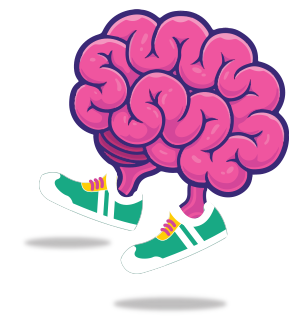







 From that statement, it’s impossible to say whether Kipchoge battled any specific issues during the race.
From that statement, it’s impossible to say whether Kipchoge battled any specific issues during the race.

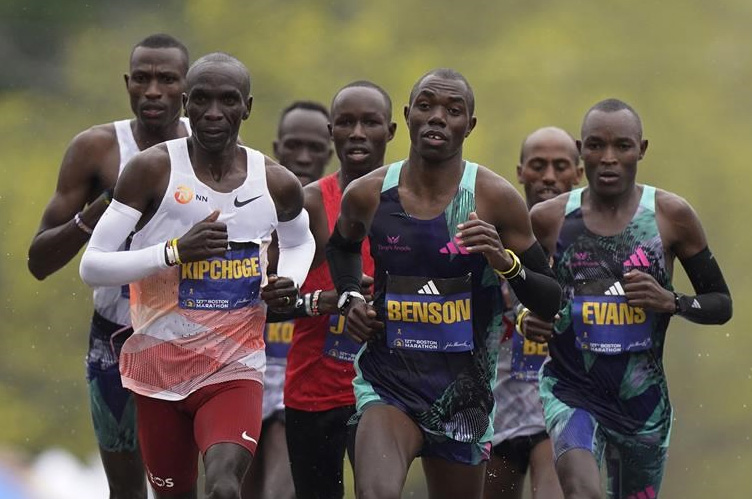 Finally, it’s worth noting that the weather was similar during Kipchoge’s last marathon loss
Finally, it’s worth noting that the weather was similar during Kipchoge’s last marathon loss Would a more conservative approach have helped?
Would a more conservative approach have helped? The lead pack was wide, meaning Kipchoge was not the only one facing the wind, but he took more of it than anyone else — certainly more than Chebet, who did a terrific job tucking in and conserving energy in the early stages.
The lead pack was wide, meaning Kipchoge was not the only one facing the wind, but he took more of it than anyone else — certainly more than Chebet, who did a terrific job tucking in and conserving energy in the early stages.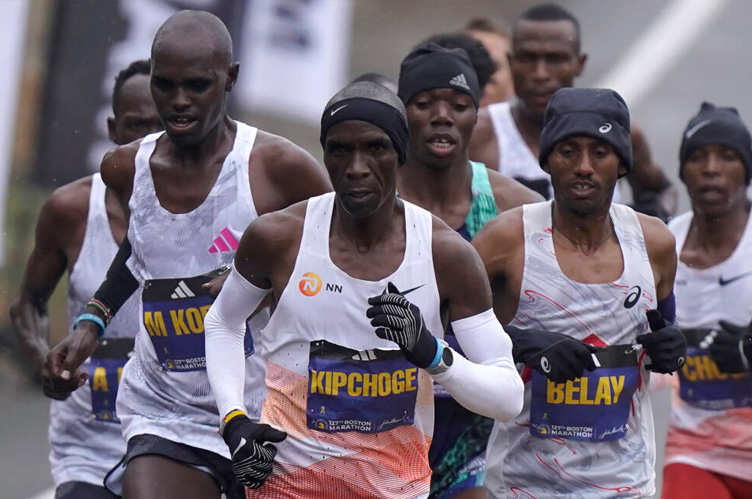 Where does Kipchoge go from here?
Where does Kipchoge go from here? So does Kipchoge head to New York, even after his struggles today in Boston (the course that most closely mimics NY’s hills and bridges)?
So does Kipchoge head to New York, even after his struggles today in Boston (the course that most closely mimics NY’s hills and bridges)? These decisions could have major consequences on Kipchoge’s quest for a third Olympic gold medal in 2024. Kipchoge has enough credit in the bank that he’d likely be on the Olympic team with a win at any 2024 spring marathon.
These decisions could have major consequences on Kipchoge’s quest for a third Olympic gold medal in 2024. Kipchoge has enough credit in the bank that he’d likely be on the Olympic team with a win at any 2024 spring marathon.



 But that won't be Kipchoge's only problem. Any records set at the Boston Marathon are not recognisable by World Athletics.
But that won't be Kipchoge's only problem. Any records set at the Boston Marathon are not recognisable by World Athletics.


 while others believe that a five-mile run is a significant challenge. Almost like the glass is either half full or half empty, endurance running is defined by the runner themselves.
while others believe that a five-mile run is a significant challenge. Almost like the glass is either half full or half empty, endurance running is defined by the runner themselves.
 Enjoy the training as much as the race
Enjoy the training as much as the race
 ظˆظ‚طھغŒ ط¨ط±ط§غŒ ط§ظˆظ„غŒظ† ط¨ط§ط± ط´ط±ظˆط¹ ط¨ظ‡ ط¯ظˆغŒط¯ظ† ظ…غŒâ€Œع©ظ†غŒط¯طŒ ع©ط§ط± ط³ط®طھغŒ ط¯ط± ظ¾غŒط´ ط¯ط§ط±غŒط¯. ط¨ط³غŒط§ط± ط³ظ†ع¯غŒظ† ظ†ظپط³ ظ…غŒâ€Œع©ط´غŒط¯ ظˆ ظ…ط؛ط²طھط§ظ† ظپط±غŒط§ط¯ ظ…غŒâ€Œع©ط´ط¯ ع©ظ‡ ط¨ط³ ع©ظ†غŒط¯.
ظˆظ‚طھغŒ ط¨ط±ط§غŒ ط§ظˆظ„غŒظ† ط¨ط§ط± ط´ط±ظˆط¹ ط¨ظ‡ ط¯ظˆغŒط¯ظ† ظ…غŒâ€Œع©ظ†غŒط¯طŒ ع©ط§ط± ط³ط®طھغŒ ط¯ط± ظ¾غŒط´ ط¯ط§ط±غŒط¯. ط¨ط³غŒط§ط± ط³ظ†ع¯غŒظ† ظ†ظپط³ ظ…غŒâ€Œع©ط´غŒط¯ ظˆ ظ…ط؛ط²طھط§ظ† ظپط±غŒط§ط¯ ظ…غŒâ€Œع©ط´ط¯ ع©ظ‡ ط¨ط³ ع©ظ†غŒط¯.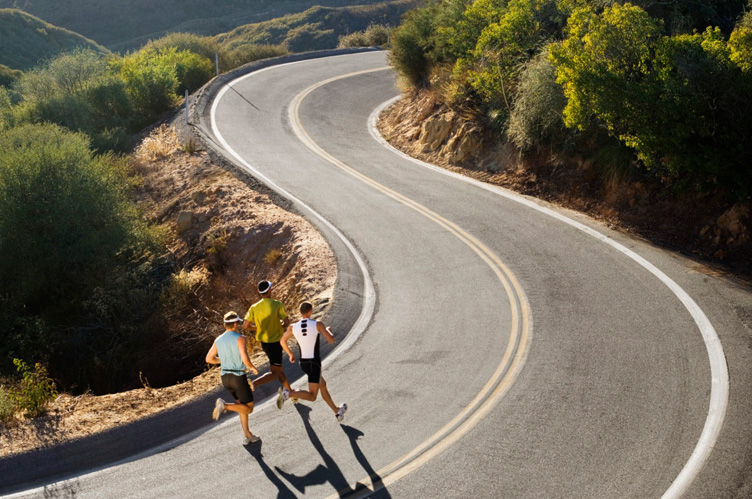
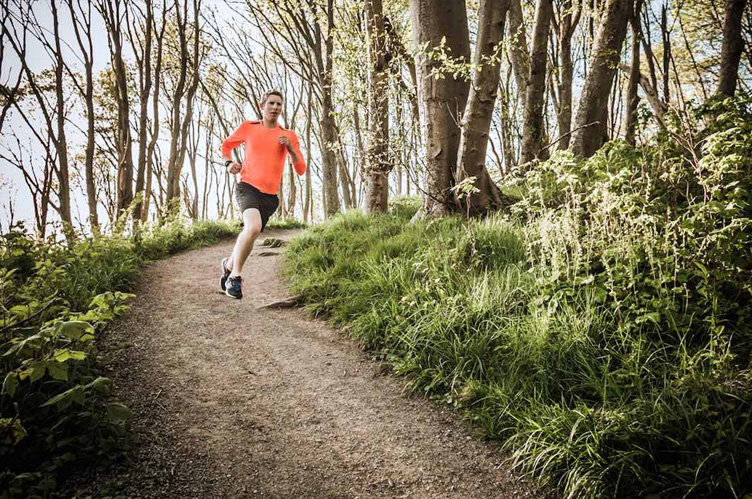
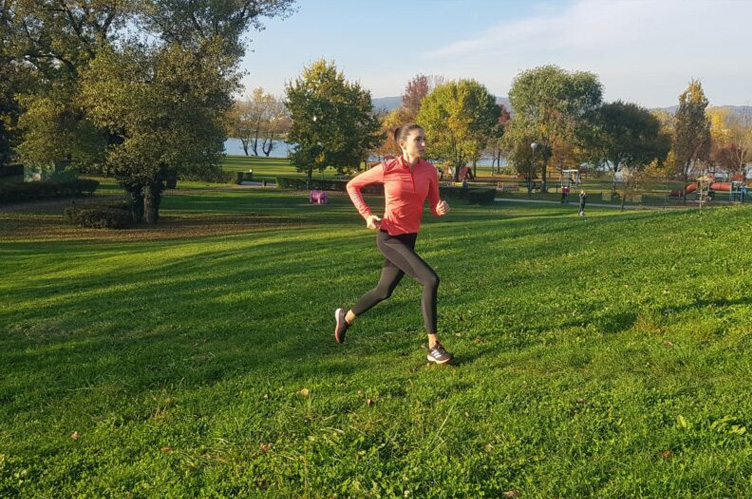 Note: ط¨ط±ط®غŒ ط§ط² ط¯ظˆظ†ط¯ع¯ط§ظ† ط¨ظ‡ طھظ…ط±غŒظ†ط§طھ ظ…ط¨طھظ†غŒ ط¨ط± ط§ظپظˆط±طھ ط¨غŒط³ (ط³ط®طھغŒ ظ…طظˆط±) ط¹ط§ط¯طھ ظ†ط¯ط§ط±ظ†ط¯طŒ ط¨ظ†ط§ط¨ط±ط§غŒظ† ط¯ط± ط§غŒظ†ط¬ط§ ظ†ط´ط§ظ† ظ…غŒâ€Œط¯ظ‡غŒظ… ع©ظ‡ طھظ…ط±غŒظ† ط¯ط± ط´غŒط¨ ع†ظ‡ طط³ظ‘غŒ ط¯ط§ط±ط¯. ط¨غŒط§غŒغŒط¯ ط§ط² ط³طھ‌ظ‡ط§غŒ ط´غŒط¨ ظ…طھظˆط³ط· ط¨ظ‡ ط¹ظ†ظˆط§ظ† ظ…ط«ط§ظ„ ط§ط³طھظپط§ط¯ظ‡ ع©ظ†غŒظ…. ط§غŒظ† طھظ…ط±غŒظ† ط¨ط§غŒط¯ طط³غŒ ط´ط¨غŒظ‡ ط¨ظ‡ 5K ط¯ط§ط´طھظ‡ ط¨ط§ط´ط¯طŒ ط¨ظ†ط§ط¨ط±ط§غŒظ† ع†ظ†ط¯ ط³طھ ط§ظˆظ„ ط¨ط§غŒط¯ ط´ط¨غŒظ‡ ع©غŒظ„ظˆظ…طھط±ظ‡ط§غŒ ط§ظˆظ„غŒظ‡ 5K ط¨ط§ط´ط¯ – ط³ط±غŒط¹ ط§ظ…ط§ ع©ظ†طھط±ظ„ ط´ط¯ظ‡ ظˆ ظ…غŒâ€Œطھظˆط§ظ†غŒط¯ ظ†ظپط³ ط®ظˆط¯ ط±ط§ ط¯ط± ط´غŒط¨ ظ…ظ†ظپغŒ ظˆ ظ‡ظ†ع¯ط§ظ… ظ†ط±ظ… ط¯ظˆغŒ ط±غŒع©ط§ظˆط±غŒ ط¨ط§ط²غŒط§ط¨غŒ ع©ظ†غŒط¯.
Note: ط¨ط±ط®غŒ ط§ط² ط¯ظˆظ†ط¯ع¯ط§ظ† ط¨ظ‡ طھظ…ط±غŒظ†ط§طھ ظ…ط¨طھظ†غŒ ط¨ط± ط§ظپظˆط±طھ ط¨غŒط³ (ط³ط®طھغŒ ظ…طظˆط±) ط¹ط§ط¯طھ ظ†ط¯ط§ط±ظ†ط¯طŒ ط¨ظ†ط§ط¨ط±ط§غŒظ† ط¯ط± ط§غŒظ†ط¬ط§ ظ†ط´ط§ظ† ظ…غŒâ€Œط¯ظ‡غŒظ… ع©ظ‡ طھظ…ط±غŒظ† ط¯ط± ط´غŒط¨ ع†ظ‡ طط³ظ‘غŒ ط¯ط§ط±ط¯. ط¨غŒط§غŒغŒط¯ ط§ط² ط³طھ‌ظ‡ط§غŒ ط´غŒط¨ ظ…طھظˆط³ط· ط¨ظ‡ ط¹ظ†ظˆط§ظ† ظ…ط«ط§ظ„ ط§ط³طھظپط§ط¯ظ‡ ع©ظ†غŒظ…. ط§غŒظ† طھظ…ط±غŒظ† ط¨ط§غŒط¯ طط³غŒ ط´ط¨غŒظ‡ ط¨ظ‡ 5K ط¯ط§ط´طھظ‡ ط¨ط§ط´ط¯طŒ ط¨ظ†ط§ط¨ط±ط§غŒظ† ع†ظ†ط¯ ط³طھ ط§ظˆظ„ ط¨ط§غŒط¯ ط´ط¨غŒظ‡ ع©غŒظ„ظˆظ…طھط±ظ‡ط§غŒ ط§ظˆظ„غŒظ‡ 5K ط¨ط§ط´ط¯ – ط³ط±غŒط¹ ط§ظ…ط§ ع©ظ†طھط±ظ„ ط´ط¯ظ‡ ظˆ ظ…غŒâ€Œطھظˆط§ظ†غŒط¯ ظ†ظپط³ ط®ظˆط¯ ط±ط§ ط¯ط± ط´غŒط¨ ظ…ظ†ظپغŒ ظˆ ظ‡ظ†ع¯ط§ظ… ظ†ط±ظ… ط¯ظˆغŒ ط±غŒع©ط§ظˆط±غŒ ط¨ط§ط²غŒط§ط¨غŒ ع©ظ†غŒط¯.


 ظ‡ظ…غŒظ† ع©ط§ط± ط±ط§ ط¨ط§ ط¯ط³طھط§ظ† ط®ظˆط¯ ط§ظ†ط¬ط§ظ… ط¯ظ‡غŒط¯ (ط¯ط± ط¨ط±ط®غŒ ظ…ظˆط§ظ‚ط¹ ط¨ط§ظ„ط§ ع©طھظپ ط¨ط²ظ†غŒط¯ ظˆ ط¨ط±ط®غŒ ظ…ظˆط§ظ‚ط¹ ظ¾ط§غŒغŒظ†). ط¨ط§ط²غŒ ط¨ط§ط²غŒ ع©ظ†غŒط¯. ط¢ط²ظ…ط§غŒط´ ع©ظ†غŒط¯. ط¨ط¨غŒظ†غŒط¯ ع†ظ‡ ع†غŒط²غŒ ط¨ط±ط§غŒ ط´ظ…ط§ ع©ط§ط± ظ…غŒâ€Œع©ظ†ط¯.
ظ‡ظ…غŒظ† ع©ط§ط± ط±ط§ ط¨ط§ ط¯ط³طھط§ظ† ط®ظˆط¯ ط§ظ†ط¬ط§ظ… ط¯ظ‡غŒط¯ (ط¯ط± ط¨ط±ط®غŒ ظ…ظˆط§ظ‚ط¹ ط¨ط§ظ„ط§ ع©طھظپ ط¨ط²ظ†غŒط¯ ظˆ ط¨ط±ط®غŒ ظ…ظˆط§ظ‚ط¹ ظ¾ط§غŒغŒظ†). ط¨ط§ط²غŒ ط¨ط§ط²غŒ ع©ظ†غŒط¯. ط¢ط²ظ…ط§غŒط´ ع©ظ†غŒط¯. ط¨ط¨غŒظ†غŒط¯ ع†ظ‡ ع†غŒط²غŒ ط¨ط±ط§غŒ ط´ظ…ط§ ع©ط§ط± ظ…غŒâ€Œع©ظ†ط¯. طط±ع©طھ ط¯ط³طھ
طط±ع©طھ ط¯ط³طھ ظ‡ظ†ع¯ط§ظ† ط¯ظˆغŒط¯ظ† ط±ظˆغŒ ط¨ط§ط³ظ† ط®ظˆط¯ طھظ…ط±ع©ط² ع©ظ†غŒط¯
ظ‡ظ†ع¯ط§ظ† ط¯ظˆغŒط¯ظ† ط±ظˆغŒ ط¨ط§ط³ظ† ط®ظˆط¯ طھظ…ط±ع©ط² ع©ظ†غŒط¯ ط¨ط±ط§غŒ ط¬ط²ط¦غŒط§طھ ع©ط§ظ…ظ„ ط¯ط± ظ…ظˆط±ط¯ ظپط±ظ… ط¯ظˆغŒط¯ظ† ط¯ط± ط´غŒط¨ ظ…ظ†ظپغŒطŒ
ط¨ط±ط§غŒ ط¬ط²ط¦غŒط§طھ ع©ط§ظ…ظ„ ط¯ط± ظ…ظˆط±ط¯ ظپط±ظ… ط¯ظˆغŒط¯ظ† ط¯ط± ط´غŒط¨ ظ…ظ†ظپغŒطŒ 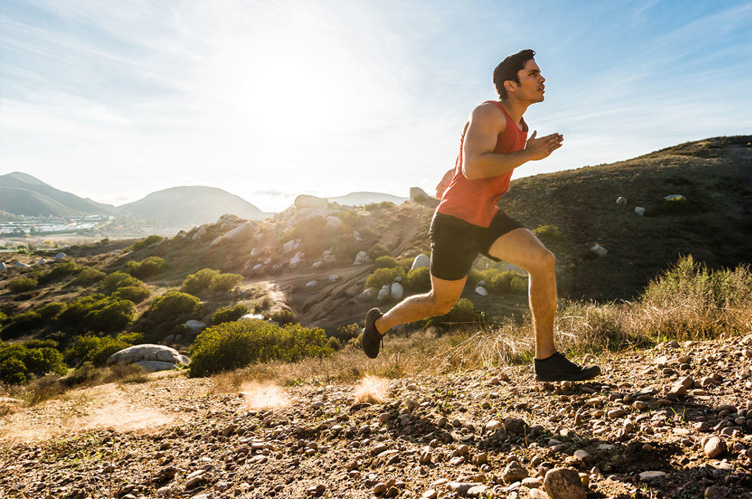 ط§ظˆط§غŒظ„ ط¨ط±ظ†ط§ظ…ظ‡
ط§ظˆط§غŒظ„ ط¨ط±ظ†ط§ظ…ظ‡ ط¨ط¹ط¶غŒ ط§ط² ط¯ظˆظ†ط¯ع¯ط§ظ† ط³ط§ع©ظ†ط§ظ† ظ…ظ†ط§ط·ظ‚ ظ…ط³ط·ط ط§ط² ظ¾ط§ط±ع©غŒظ†ع¯ ظˆ ظ¾ظ„‌ظ‡ط§ ط¨ط±ط§غŒ طھظ…ط±غŒظ†ط§طھ ط´غŒط¨ ط®ظˆط¯ ط§ط³طھظپط§ط¯ظ‡ ظ…غŒâ€Œع©ظ†ظ†ط¯. ظˆط§ط¶ط ط§ط³طھ ع©ظ‡ ط§ظ†طھط®ط§ط¨â€Œظ‡ط§غŒ ظ…طط¯ظˆط¯غŒ ط¯ط§ط±غŒط¯ ظˆظ„غŒ ط§ط² ظ‡غŒع†غŒ ط¨ظ‡طھط± ط§ط³طھ. ط§ع¯ط± ط¨ظ‡ ظ‡غŒع† ط´غŒط¨غŒ ط¯ط³طھط±ط³غŒ ظ†ط¯ط§ط±غŒط¯ طھظ…ط±غŒظ†ط§طھ ط´غŒط¨ ط®ظˆط¯ ط±ط§ ط¨ظ‡ ظپط§ط±طھظ„ع© (ط¨ط§ط²غŒ ط¨ط§ ط³ط±ط¹طھ) طھط؛غŒغŒط± ط¯ظ‡غŒط¯ ظˆ ط§ط² ظ„طط§ط¸ ط²ظ…ط§ظ†غŒ ظˆ ط§ظپظˆط±طھ ظˆ ط±غŒع©ط§ظˆط±غŒ ظˆ طھط¹ط¯ط§ط¯ ط³طھ‌ظ‡ط§ طھط·ط¨غŒظ‚ ط¯ظ‡غŒط¯.
ط¨ط¹ط¶غŒ ط§ط² ط¯ظˆظ†ط¯ع¯ط§ظ† ط³ط§ع©ظ†ط§ظ† ظ…ظ†ط§ط·ظ‚ ظ…ط³ط·ط ط§ط² ظ¾ط§ط±ع©غŒظ†ع¯ ظˆ ظ¾ظ„‌ظ‡ط§ ط¨ط±ط§غŒ طھظ…ط±غŒظ†ط§طھ ط´غŒط¨ ط®ظˆط¯ ط§ط³طھظپط§ط¯ظ‡ ظ…غŒâ€Œع©ظ†ظ†ط¯. ظˆط§ط¶ط ط§ط³طھ ع©ظ‡ ط§ظ†طھط®ط§ط¨â€Œظ‡ط§غŒ ظ…طط¯ظˆط¯غŒ ط¯ط§ط±غŒط¯ ظˆظ„غŒ ط§ط² ظ‡غŒع†غŒ ط¨ظ‡طھط± ط§ط³طھ. ط§ع¯ط± ط¨ظ‡ ظ‡غŒع† ط´غŒط¨غŒ ط¯ط³طھط±ط³غŒ ظ†ط¯ط§ط±غŒط¯ طھظ…ط±غŒظ†ط§طھ ط´غŒط¨ ط®ظˆط¯ ط±ط§ ط¨ظ‡ ظپط§ط±طھظ„ع© (ط¨ط§ط²غŒ ط¨ط§ ط³ط±ط¹طھ) طھط؛غŒغŒط± ط¯ظ‡غŒط¯ ظˆ ط§ط² ظ„طط§ط¸ ط²ظ…ط§ظ†غŒ ظˆ ط§ظپظˆط±طھ ظˆ ط±غŒع©ط§ظˆط±غŒ ظˆ طھط¹ط¯ط§ط¯ ط³طھ‌ظ‡ط§ طھط·ط¨غŒظ‚ ط¯ظ‡غŒط¯. ظ„غŒط¯غŒط§ط±ط¯ ط§ط² ط³ظ‡ ظ†ظˆط¹ طھظ…ط±غŒظ† ط¯ط±غŒظ„ ط¯ظˆغŒ ط§ط³طھظپط§ط¯ظ‡ ظ…غŒâ€Œع©ط±ط¯:
ظ„غŒط¯غŒط§ط±ط¯ ط§ط² ط³ظ‡ ظ†ظˆط¹ طھظ…ط±غŒظ† ط¯ط±غŒظ„ ط¯ظˆغŒ ط§ط³طھظپط§ط¯ظ‡ ظ…غŒâ€Œع©ط±ط¯: ظ‡غŒظ„ ط§ط³ظ¾ط±غŒظ†ع¯
ظ‡غŒظ„ ط§ط³ظ¾ط±غŒظ†ع¯






 To do this, find a smooth, flat surface. A track or long stretch of road works perfectly. From there, you have two options. You can:
To do this, find a smooth, flat surface. A track or long stretch of road works perfectly. From there, you have two options. You can:





 When it comes to a 10k, it will depend on how quick you are.
If you are able to run the 10k under 40 minutes, you do not need to take on any carbs, but if you run between 45-60 minutes, you should take a swig of a sports drink if you feel like you need to.
When it comes to a 10k, it will depend on how quick you are.
If you are able to run the 10k under 40 minutes, you do not need to take on any carbs, but if you run between 45-60 minutes, you should take a swig of a sports drink if you feel like you need to.

 The second reason to wait 45-60 minutes between taking gels is that you don’t want to speed too much simple sugar into your blood stream at once.
The second reason to wait 45-60 minutes between taking gels is that you don’t want to speed too much simple sugar into your blood stream at once. For example, eat 1/4 of the packet every 20 minutes.
For example, eat 1/4 of the packet every 20 minutes. At the 2008 Olympic Trials, Desi Linden (Davila) had trouble keeping down her fluids and gels.
Everything she took in came back up. So, after fading to the finish, Desi implemented gels in practice, but even that process wasn’t smooth.
At the 2008 Olympic Trials, Desi Linden (Davila) had trouble keeping down her fluids and gels.
Everything she took in came back up. So, after fading to the finish, Desi implemented gels in practice, but even that process wasn’t smooth.



















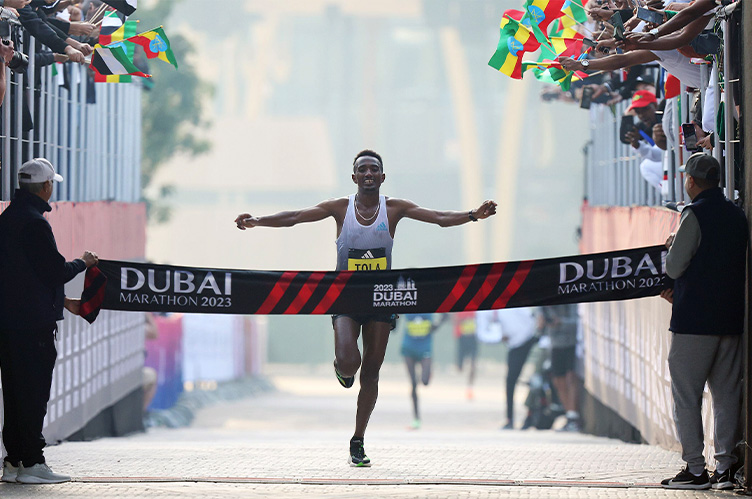 An interesting event in this period was the simultaneous championship of "Abdisa Tola" and "Dara Dida", the brother and wife of the world champion "Tamirat Tola".
An interesting event in this period was the simultaneous championship of "Abdisa Tola" and "Dara Dida", the brother and wife of the world champion "Tamirat Tola".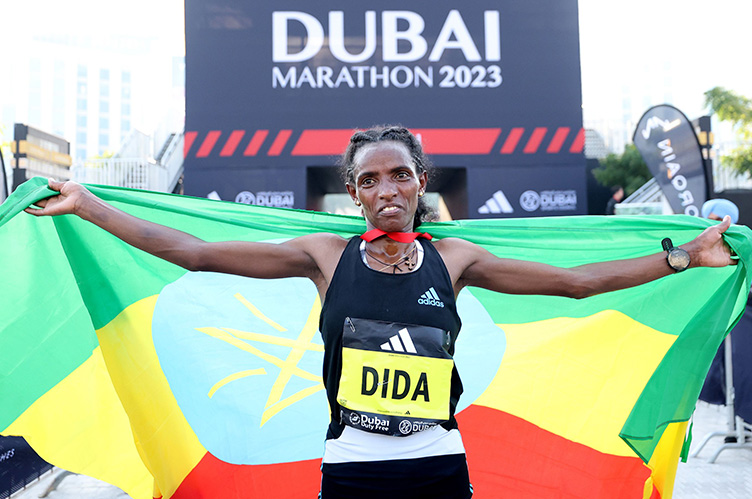 In the men’s race a pack of 13 men hit halfway in 62:31-62:33 but by 30k (1:28:53, 2:05 flat pace) the lead pack was down to 8.
In the men’s race a pack of 13 men hit halfway in 62:31-62:33 but by 30k (1:28:53, 2:05 flat pace) the lead pack was down to 8.